课程地址:快速学习C和C++,基础语法和优化策略,学了不再怕指针(南科大计算机系原版)_哔哩哔哩_bilibili
github地址:ShiqiYu/CPP: Lecture notes, projects and other materials for Course ‘CS205 C/C++ Program Design’ at Southern University of Science and Technology. (github.com)
由于之前已经学过C语言,部分内容将跳过。
Week1 the first example 1 2 3 4 5 6 7 8 9 10 11 12 13 14 15 16 17 //C++ example in C++11 #include <iostream> #include <vector> #include <string> using namespace std; int main() { vector<string> msg {"Hello", "C++", "World", "!"}; for (const string& word : msg) { cout << word << " "; } cout << endl; }
使用g++进行编译
•Compile hello.cpp
•Initialization of msg is a C++11 extension. We need
1 g++ hello.cpp --std=c++11
•Executable file can be generated as a.out. Change the output filename by -o option
1 g++ hello.cpp --std=c++11 -o hello
•Execute
经过测试,windows版本上默认C++选项为c++17,linux上默认为c++14。
编译链接 当存在3个文件时,先编译,后链接。
1 2 3 4 5 6 7 8 9 10 11 12 13 14 15 16 17 18 #include <iostream> #include "mul.hpp" using namespace std; int main() { int a, b; int result; cout << "Pick two integers:"; cin >> a; cin >> b; result = mul(a, b); cout << "The result is " << result << endl; return 0; }
1 2 3 4 5 6 #include "mul.hpp" int mul(int a, int b) { return a * b; }
1 2 #pragma once int mul(int a, int b);
也可以一起编译
1 g++ .\main.cpp .\mul.cpp -o mul
预处理和宏 •The preprocessor is executed before the compilation.
•Preprocessing directives begin with a # character
•Each directive occupies one line
•preprocessing instruction (define, undef, include, if, ifdef, ifndef, else, elif, endif, line, error, pragma)
输入输出 1 2 3 4 5 6 7 8 9 10 11 12 13 14 int main() { /* ... */ } int main(int argc, char *argv[]) { ... } int main(int argc, char **argv) { ... }
可以接收参数数组
1 2 3 4 5 6 7 8 #include <iostream> using namespace std; int main(int argc, char * argv[]) { for (int i = 0; i < argc; i++) cout << i << ": " << argv[i] << endl; }
Week2 interger 初始化方式
1 2 3 4 5 6 7 8 int num; num = 10;//do not forget this line int num = 10; int num (10); int num {10};
还可以使用圆括号或花括号进行初始化。
more interger types char •char: type for character, 8-bit integer indeed!
•signed char: signed 8-bit integer
•unsinged char: unsigned 8-bit integer
•char: either signed char or unsinged char
char.cpp
1 2 3 4 5 6 7 8 9 10 11 12 13 14 15 16 17 #include <iostream> using namespace std; int main() { char c1 = 'C'; char c2 = 80; char c3 = 0x50; char16_t c4 = u'于'; char32_t c5 = U'于'; cout << c1 << ":" << c2 << ":"<< c3 << endl; cout << +c1 << ":" << +c2 << ":" << +c3 << endl; cout << c4 << endl; cout << c5 << endl; return 0; }
bool •A C++ keyword, but not a C keyword
•bool width: 1 byte (8 bits), NOT 1 bit!
•Value: true (1) or false (0)
长度为1个字节,而不是1位。
bool.cpp
1 2 3 4 5 6 7 8 9 10 11 12 13 14 #include <iostream> using namespace std; int main() { bool b1 = true; int i = b1; bool b2 = -256; cout << "i=" << i << endl; cout << "b1=" << b1 << endl; cout << "b2=" << b2 << endl; cout << true << endl; return 0; }
bool非0即1。
在c语言中,c99中,引入stdbool.h头文件即可。
Fixed width integer types since C++11
intmax.cpp
1 2 3 4 5 6 7 8 #include <iostream> #include <cstdint> using namespace std; int main() { cout << "INT8_MAX=" << INT8_MAX << endl; return 0; }
Floating-point Numbers float.cpp
1 2 3 4 5 6 7 8 9 10 11 #include <iostream> #include <iomanip> using namespace std; int main() { float f1 = 1.2f; float f2 = f1 * 1000000000000000; cout << std::fixed << std::setprecision(15) << f1 << endl; cout << std::fixed << std::setprecision(15) << f2 << endl; return 0; }
关于fixed、setprecision等的用法,参见详解C++中fixed,setprecision(),setw()的用法_羡君的博客-CSDN博客_c++ fixed
==>浮点数默认保留6位有效数字,但结尾是小数0,则会舍去,使用fixed能取消科学计数法(默认6位小数),使用setprecision(n) 则可以控制小数保留n位。
inf and nan nan.cpp
1 2 3 4 5 6 7 8 9 10 11 #include <iostream> using namespace std; int main() { float f1 = 2.0f / 0.0f; float f2 = 0.0f / 0.0f; cout << f1 << endl; cout << f2 << endl; return 0; }
Arithmetic Operators
auto since C++11
类型初始化时就确定,不会再改变。
Divisions
Week3 goto Statement
goto.cpp
1 2 3 4 5 6 7 8 9 10 11 12 13 14 float mysquare(float value) { float result = 0.0f; if(value >= 1.0f || value <= 0) { cerr << "The input is out of range." << endl; goto EXIT_ERROR; } result = value * value; return result; EXIT_ERROR: //do sth such as closing files here return 0.0f; }
Week4 Arrays 没有初始化的话,值不确定。
array.cpp
1 2 3 4 5 6 7 8 9 10 11 12 13 14 15 16 17 #include <iostream> using namespace std; int main() { int num_array1[5]; //uninitialized array, random values int num_array2[5] = {0, 1, 2, 3, 4}; //initialization for(int idx = 0; idx < 5; idx++) cout << num_array1[idx] << " "; cout << endl; for(int idx = 0; idx < 5; idx++) cout << num_array2[idx] << " "; cout << endl; return 0; }
Variable-length arrays 数组长度在运行时确定。
variable-array.cpp
1 2 3 4 5 6 7 8 9 10 11 12 13 14 15 16 #include <iostream> using namespace std; int main() { int num_array1[5] = {0,1}; // fixed length array, initialized to {0,1,0,0,0} cout << "sizeof(num_array1) = " << sizeof(num_array1) << endl; int len = 0; while ( len < 10 ) { int num_array2[len]; //variable-length array cout << "len = " << len; cout << ", sizeof(num_array2)) = " << sizeof(num_array2) << endl; len ++; } }
注意:变长数组不要初始化
Arrays of unknown size 未知长度数组
Element accessing
注意,c/cpp中不会进行越界检查。
index-bound.cpp
1 2 3 4 5 6 7 8 9 10 11 12 13 14 #include <iostream> using namespace std; int main() { int num_array[5]; for(int idx = -1; idx <= 5; idx++) //out of bounds num_array[idx] = idx * idx; for(int idx = -1; idx <= 5; idx++) //out of bounds cout << "num_array[" << idx << "] = " << num_array[idx] << endl; return 0; }
Multidimensional arrays
const Arrays const-array.cpp
1 2 3 4 5 6 7 8 9 10 11 12 13 14 15 16 17 18 19 20 21 22 23 24 25 26 27 28 29 #include <iostream> using namespace std; //float array_sum(const float *values, size_t length) //float array_sum(const float values[4], size_t length) float array_sum(const float values[], size_t length) { float sum = 0.0f; for (int i = 0; i < length; i++) { sum += values[i]; //values[i] = 0; //error } return sum; } int main() { // const float PI = 3.1415926f; // PI += 1.f; // error // const float values[4] = {1.1f, 2.2f, 3.3f, 4.4f}; // values[0] = 1.0f; // error float values[4] = {1.1f, 2.2f, 3.3f, 4.4f}; float sum = array_sum(values, 4); cout << "sum = " << sum << endl; return 0; }
可以防止对元素进行误操作。
Strings Array-style strings •An array-style string (null-terminated strings/arrays of characters) is a series of characters stored in bytes in memory.
•This kind of strings can be declared as follows
1 char rabbit[16] = {'P', 'e', 't', 'e', 'r'};
initchar.cpp
1 2 3 4 5 6 7 8 9 10 11 12 13 14 15 16 17 18 19 20 21 22 23 #include <iostream> #include <cstring> using namespace std; int main() { char rabbit[16] = {'P', 'e', 't', 'e', 'r'}; cout << "String length is " << strlen(rabbit) << endl; for(int i = 0; i < 16; i++) cout << i << ":" << +rabbit[i] << "(" << rabbit[i] << ")" << endl; char bad_pig[9] = {'P', 'e', 'p', 'p', 'a', ' ', 'P', 'i', 'g'}; char good_pig[10] = {'P', 'e', 'p', 'p', 'a', ' ', 'P', 'i', 'g', '\0'}; cout << "Rabbit is (" << rabbit << ")" << endl; cout << "Pig's bad name is (" << bad_pig << ")" << endl; cout << "Pig's good name is (" << good_pig << ")" << endl; char name[10] = {'Y', 'u', '\0', 'S', '.', '0'}; cout << strlen(name) << endl; return 0; }
String literals •It isn’t convenient to initial a string character by character.
•String literals can help.
1 char name1[] = "Southern University of Science and Technology";
字符串操作
strncpy:拷贝count个,防止越界。
stringop.cpp
1 2 3 4 5 6 7 8 9 10 11 12 13 14 15 16 17 18 19 20 21 22 23 #include <iostream> #include <cstring> using namespace std; int main() { char str1[] = "Hello, \0CPP"; char str2[] = "SUSTech"; char result[128]; for(int i = 0; i < 16; i++) cout << i << ":" << +str1[i] << "(" << str1[i] << ")" << endl; strcpy(result, str1); cout << "Result = " << result << endl; strcat(result, str2); cout << "Result = " << result << endl; cout << "strcmp() = " << strcmp(str1, str2) << endl; //strcat(str1, str2); //danger operation! //cout << "str1 = " << str1 << endl; }
string class •Null-terminated strings are easy to be out of bound, and to cause problems.
•string class provides functions to manipulate and examinate strings.
stdstring.cpp
1 2 3 4 5 6 7 8 9 10 11 12 13 14 15 16 17 18 #include <iostream> #include <string> using namespace std; int main() { std::string str1 = "Hello"; std::string str2 = "SUSTech"; std::string result = str1 + ", " + str2; cout << "result = " + result << endl; cout << "The length is " << result.length() << endl; cout << "str1 < str2 is " << (str1 < str2) << endl; return 0; }
Structures, Unions and Enumerations struct struct.c
1 2 3 4 5 6 7 8 9 10 11 12 13 14 15 16 17 18 19 20 21 22 23 24 25 26 27 28 29 30 31 32 33 #include <stdio.h> #include <string.h> #include <stdbool.h> // typedef // struct _Student{ // char name[4]; // int born; // bool male; // } Student; struct Student{ char name[4]; int born; bool male; }; int main() { struct Student stu = {"Yu", 2000, true}; //initialization // strcpy(stu.name, "Yu"); // stu.born = 2000; // stu.male = true; printf("Student %s, born in %d, gender %s\n", stu.name, stu.born, stu.male ? "male" : "female"); struct Student students[100]; students[50].born = 2002; return 0; }
注意:在c语言下,初始化Student要给struct Student,如果要去除struct,则要typeof
1 2 3 4 5 6 typedef struct _Student{ char name[4]; int born; bool male; } Student;
Structure padding •In order to align the data in memory, some empty bytes will be padded
存储会内存对齐,因此数据顺序不一样,导致占用大小不同,第一个用12字节,第二个用16个字节。
struct in C and C++ •struct and class in C++ are identical except for several features.
1 2 3 4 5 6 7 8 struct Student1{ int id; bool male; char label; float height; }; Student1 stu; stu.id = 123;
No typedef needed in C++!
union
结构体所有成员共享同一内存,大小以最大的为准。一个地址多个名字。
1 2 3 4 5 6 7 8 9 10 11 12 13 14 15 16 17 18 19 20 21 22 23 24 25 26 27 28 29 30 #include <iostream> using namespace std; union ipv4address{ std::uint32_t address32; std::uint8_t address8[4]; }; int main() { union ipv4address ip; cout << "sizeof(ip) = " << sizeof(ip) << endl; ip.address8[3] = 127; ip.address8[2] = 0; ip.address8[1] = 0; ip.address8[0] = 1; cout << "The address is " ; cout << +ip.address8[3] << "."; cout << +ip.address8[2] << "."; cout << +ip.address8[1] << "."; cout << +ip.address8[0] << endl; cout << std::hex; cout << "in hex " << ip.address32 << endl; return 0; }
enum
enum.cpp
1 2 3 4 5 6 7 8 9 10 11 12 13 14 15 16 17 18 19 20 21 22 23 24 25 26 27 28 29 30 31 32 33 34 35 36 37 38 39 40 41 42 43 44 45 46 47 48 49 50 51 52 53 54 55 56 57 58 59 60 61 62 63 64 65 #include <iostream> using namespace std; enum color {WHITE, BLACK, RED, GREEN, BLUE, YELLOW, NUM_COLORS}; enum datatype {TYPE_INT8=1, TYPE_INT16=2, TYPE_INT32=4, TYPE_INT64=8}; struct Point{ enum datatype type; union { std::int8_t data8[3]; std::int16_t data16[3]; std::int32_t data32[3]; std::int64_t data64[3]; }; }; size_t datawidth(struct Point pt) { return size_t(pt.type) * 3; } int64_t l1norm(struct Point pt) { int64_t result = 0; switch(pt.type) { case (TYPE_INT8): result = abs(pt.data8[0]) + abs(pt.data8[1]) + abs(pt.data8[2]); break; case (TYPE_INT16): result = abs(pt.data16[0]) + abs(pt.data16[1]) + abs(pt.data16[2]); break; case (TYPE_INT32): result = abs(pt.data32[0]) + abs(pt.data32[1]) + abs(pt.data32[2]); break; case (TYPE_INT64): result = abs(pt.data64[0]) + abs(pt.data64[1]) + abs(pt.data64[2]); break; } return result; } int main() { enum color pen_color = RED; pen_color = color(3); //convert int to enum cout << "We have " << NUM_COLORS << " pens." << endl; //pen_color += 1; //error! int color_index = pen_color; color_index += 1; cout << "color_index = " << color_index << endl; //declaration and initialization struct Point point1 = {.type=TYPE_INT8, .data8={-2,3,4}}; struct Point point2 = {.type=TYPE_INT32, .data32={1,-2,3}}; cout << "Data width = " << datawidth(point1) << endl; cout << "Data width = " << datawidth(point2) << endl; cout << "L1 norm = " << l1norm(point1) << endl; cout << "L1 norm = " << l1norm(point2) << endl; return 0; }
typedef 1 2 3 4 5 6 7 8 9 10 11 12 13 14 15 16 17 18 19 20 21 22 23 24 25 26 27 28 29 30 31 32 33 #include <iostream> using namespace std; typedef int myint; typedef unsigned char vec3b[3]; typedef struct _rgb_struct{ // name _rgb_struct can be omit unsigned char r; unsigned char g; unsigned char b; } rgb_struct; int main() { myint num = 32; // the following two lines are identical //unsigned char color[3] = {255, 0, 255}; vec3b color = {255, 0, 255}; cout << hex; cout << "R=" << +color[0] << ", "; cout << "G=" << +color[1] << ", "; cout << "B=" << +color[2] << endl; rgb_struct rgb = {0, 255, 128}; cout << "R=" << +rgb.r << ", "; cout << "G=" << +rgb.g << ", "; cout << "B=" << +rgb.b << endl; cout << sizeof(rgb.r) << endl; cout << sizeof(+rgb.r) << endl; //why 4? return 0; }
Week5 Pointers •A pointer is declared like a variable, but with * after the type.
•What stored in a pointer variable is an address.
•Operator & can take the address of an object or a variable of fundamental types. Operator * can take the content that the pointer points to
&取地址,*取内容
Differences between a pointer and an array •Array is a constant pointer.
•The total size of all elements in an array can be got by operator sizeof
•sizeof operator to a pointer will return the size of the address (4 or 8)
1 2 3 4 5 int numbers[4] = {0, 1, 2, 3}; int * p = numbers; cout << sizeof(numbers) << endl; //4*sizeof(int) cout << sizeof(p) << endl; // 4 or 8 cout << sizeof(double *) << endl; // 4 or 8
Allocate memory: C style 动态内存管理
临时局部变量,如int i存放在stack中,而动态申请内存则存放heap中。stack的地址越申请越小,heap的越申请越大。
Memory allocation •Allocate size bytes of uninitialized storage. void* malloc( size_t size )
•Allocate 4 bytes and convert the pointer to (int ) explicitly. `int p1 = (int*) malloc (4);`
•对于int * p1 = (int*) malloc (3);申请了3个字节,但可以使用第4个字节,无严重后果。
Memory deallocation
哪里申请,哪里释放。
memoryleak.c
1 2 3 4 5 6 7 8 9 10 11 12 13 14 15 16 17 18 19 20 21 22 23 24 25 26 27 28 #include <stdio.h> #include <stdlib.h> void foo() { int* p = (int *) malloc( sizeof(int)); return; } //memory leak int main() { int * p = NULL; p = (int *) malloc(4 * sizeof(int)); // some statements p = (int *) malloc(8 * sizeof(int)); // some statements free (p); // the first memory will not be freed for(int i = 0; i < 1024; i++) { p = (int *) malloc(1024 * 1024 * 1024); } printf("End\n"); return 0; }
申请了1T内存,由于操作系统保护机制,程序没有崩掉。
Allocate memory: C++ style Operator new and new[] •Operator new is similar with malloc() but with more features.
1 2 3 4 5 6 7 8 9 10 11 12 13 14 15 16 17 18 19 20 21 22 23 24 25 26 //allocate an int, default initializer (do nothing) int * p1 = new int; //allocate an int, initialized to 0 int * p2 = new int(); //allocate an int, initialized to 5 int * p3 = new int(5); //allocate an int, initialized to 0 int * p4 = new int{};//C++11 //allocate an int, initialized to 5 int * p5 = new int {5};//C++11 //allocate a Student object, default initializer Student * ps1 = new Student; //allocate a Student object, initialize the members Student * ps2 = new Student {"Yu", 2020, 1}; //C++11 //allocate 16 int, default initializer (do nothing) int * pa1 = new int[16]; //allocate 16 int, zero initialized int * pa2 = new int[16](); //allocate 16 int, zero initialized int * pa3 = new int[16]{}; //C++11 //allocate 16 int, the first 3 element are initialized to 1,2,3, the rest 0 int * pa4 = new int[16]{1,2,3}; //C++11 //allocate memory for 16 Student objects, default initializer Student * psa1 = new Student[16]; //allocate memory for 16 Student objects, the first two are explicitly initialized Student * psa2 = new Student[16]{{"Li", 2000,1}, {"Yu", 2001,1}}; //C++11
Operator delete and delete[] •Destroys object/objects allocated by new and free memory
1 2 3 4 5 6 7 8 9 10 11 12 //deallocate memory delete p1; //deallocate memory delete ps1; //deallocate the memory of the array delete pa1; //deallocate the memory of the array delete []pa2; //deallocate the memory of the array, and call the destructor of the first element delete psa1; //deallocate the memory of the array, and call the destructors of all the elements delete []psa2;
注意,如果数组里是结构体或者对象,delete psa1;只会删除第一个,因此建议写成delete []psa2;。
Week6 Functions How are functions called?
Function Parameters •The symbolic name for “data” that passes into a function.
Two ways to pass into a function:
•Pass by value
•Pass by reference
Pass by value: fundamental type •The parameter is a copy of the original variable
Pass by value: pointer 传递的是地址的拷贝,函数内部指针地址的修改不会影响到外部指针的地址。
Pass by value: structure
结构体内容会被拷贝,但是由于pData是指针,修改指向的内容,则原始的也会被修改。
References •References are in C++, not in C.
•A reference is an alias to an already-existing variable/object.
相当于别名
1 2 3 int num = 0; int & num_ref = num; num_ref = 10;
•A reference to an object
1 2 3 4 5 6 Matrix matA = {3,4}; matA.pData = new float[matA.rows * matA.cols]{}; Matrix & matA_ref = matA; Matrix * pMatA = &matA;
•A reference must be initialized after its declaration.
1 2 int & num_ref; // error Matrix & mat_ref; // error
• Reference VS Pointer: References are much safer
java中使用引用代替了指针,更加安全。
References as function parameters •No data copying in the reference version; Better efficiency The modification to a reference will affect the original object
Inline functions •Stack operations and jumps are needed for a function call.
•It is a heavy cost for some frequently called tiny functions.
•The generated instructions by a compiler can be as follows to improve efficiency
Why not use a macros? 为啥不用宏?#define MAX_MACRO(a, b) (a)>(b) ? (a) : (b)
•The source code will be replaced by a preprocessor.
•Surely no cost of a function call,
•And a, b can be any types which can compare.
宏很危险。
Week7 argument与parameter区别:对float norm(float x, float y, float z = 0);0是argument ,z则是parameter 。
Default Arguments •A feature in C++ (not C).
•To call a function without providing one or more trailing arguments.
默认参数应该在尾部
default-argument.cpp
1 2 3 4 5 6 7 8 9 10 11 12 13 14 15 16 17 18 19 20 #include <iostream> #include <cmath> using namespace std; float norm(float x, float y, float z); float norm(float x, float y, float z = 0); float norm(float x, float y = 0, float z); int main() { cout << norm(3.0f) << endl; cout << norm(3.0f, 4.0f) << endl; cout << norm(3.0f, 4.0f, 5.0f) << endl; return 0; } float norm(float x, float y, float z) { return sqrt(x * x + y * y + z * z); }
对于float norm(float x, float y = 0, float z);,虽然默认参数不在尾部,但是前面有了个float norm(float x, float y, float z = 0);此时z的默认参数是0。若将这两行对换,或将float norm(float x, float y = 0, float z);
Function Overloading c++特性
•Which function to choose? The compiler will perform name lookup.
•Argument-dependent lookup, also known as ADL.
The return type will not be considered in name lookup.
1 2 3 4 5 6 7 8 9 10 11 12 13 14 15 int sum(int x, int y) { cout << "sum(int, int) is called" << endl; return x + y; } float sum(float x, float y) { cout << "sum(float, float) is called" << endl; return x + y; } double sum(double x, double y) { cout << "sum(double, double) is called" << endl; return x + y; }
Function Templates •A function template is not a type, or a function, or any other entity.
•No code is generated from a source file that contains only template definitions.
•The template arguments must be determined, then the compiler can generate an actual function
1 2 3 4 5 6 7 8 9 10 11 12 13 14 template<typename T> T sum(T x, T y) { cout << "The input type is " << typeid(T).name() << endl; return x + y; } // instantiates sum<double>(double, double) template double sum<double>(double, double); // instantiates sum<char>(char, char), template argument deduced template char sum<>(char, char); // instantiates sum<int>(int, int), template argument deduced template int sum(int, int);
template也会隐式实例化。
template2.cpp
1 2 3 4 5 6 7 8 9 10 11 12 13 14 15 16 17 18 19 20 #include <iostream> #include <typeinfo> using namespace std; template<typename T> T sum(T x, T y) { cout << "The input type is " << typeid(T).name() << endl; return x + y; } // Explicitly instantiate template double sum<double>(double, double); int main() { auto val = sum(4.1, 5.2); cout << val << endl; return 0; }
Function template specialization
需要针对特例专门定义函数。
specialization.cpp
1 2 3 4 5 6 7 8 9 10 11 12 13 14 15 16 17 18 19 20 21 22 23 24 25 26 27 28 29 30 31 32 33 34 35 36 37 38 39 40 41 #include <iostream> #include <typeinfo> using namespace std; template<typename T> T sum(T x, T y) { cout << "The input type is " << typeid(T).name() << endl; return x + y; } struct Point { int x; int y; }; // Specialization for Point + Point operation template<> Point sum<Point>(Point pt1, Point pt2) { cout << "The input type is " << typeid(pt1).name() << endl; Point pt; pt.x = pt1.x + pt2.x; pt.y = pt1.y + pt2.y; return pt; } int main() { //Explicit instantiated functions cout << "sum = " << sum(1, 2) << endl; cout << "sum = " << sum(1.1, 2.2) << endl; Point pt1 {1, 2}; Point pt2 {2, 3}; Point pt = sum(pt1, pt2); cout << "pt = (" << pt.x << ", " << pt.y << ")" << endl; return 0; }
特例化需要template<>,实例化则不需要<>和函数体。
Function Pointers and References 函数指针与函数引用
Function pointers •norm_ptr is a pointer, a function pointer.
•The function should have two float parameters, and returns float.
1 2 3 4 5 6 7 8 9 float norm_l1(float x, float y); float norm_l2(float x, float y); float (*norm_ptr)(float x, float y); norm_ptr = norm_l1; //Pointer norm_ptr is pointing to norm_l1 norm_ptr = &norm_l2; //Pointer norm_ptr is pointing to norm_l2 float len1 = norm_ptr(-3.0f, 4.0f); //function invoked float len2 = (*norm_ptr)(-3.0f, 4.0f); //function invoked
•A function pointer can be an argument and pass to a function.
将函数传入另一个函数中,作为回调函数。
1 2 3 4 <stdlib.h> void qsort( void *ptr, size_t count, size_t size, int (*comp)(const void *, const void *) );
Function references 1 2 3 float norm_l1(float x, float y); //declaration float norm_l2(float x, float y); //declaration float (&norm_ref)(float x, float y) = norm_l1; //norm_ref is a function reference
Recursive Functions 递归
Week8 C/C++ with ARM Speedup Your Program Some Tips on Optimization •Choose an appropriate algorithm
•Clear and simple code for the compiler to optimize
•Optimize code for memory
•Do not copy large memory
•No printf()/cout in loops
•Table lookup (sin(), cos() …)
•SIMD, OpenMP
SIMD: Single instruction, multiple data 一个指令处理多组数组
An Example with SIMD and OpenMP
使用cmake .. -DCMAKE_BUILD_TYPE=Release可以产生release版本。
SIMD+OpenMP计算错误。
Avoid Memory Copy
•How many bytes for a row of Matrix 4(row)x3(col)?
ØCan be 3, 4, 8, and any other values >=3.
ØMemory alignment for SIMD
Week9 Classes and Objects Structures
Classes
firstclass.cpp
1 2 3 4 5 6 7 8 9 10 11 12 13 14 15 16 17 18 19 20 21 22 23 24 25 26 27 28 29 30 31 32 33 34 35 36 37 38 39 40 #include <iostream> #include <cstring> class Student { public: char name[4]; int born; bool male; void setName(const char * s) { strncpy(name, s, sizeof(name)); } void setBorn(int b) { born = b; } void setGender(bool isMale) { male = isMale; } void printInfo() { std::cout << "Name: " << name << std::endl; std::cout << "Born in " << born << std::endl; std::cout << "Gender: " << (male ? "Male" : "Female") << std::endl; } }; int main() { Student yu; yu.setName("Yu"); yu.setBorn(2000); yu.setGender(true); yu.born = 2001; // it can also be manipulated directly yu.printInfo(); std::cout << "It's name is " << yu.name << std::endl; return 0; }
Access Specifiers •You can protect data members by access specifier private.
•Then data member can only be accessed by well designed member functions.
不写限定符,默认是private
access-attribute.cpp
1 2 3 4 5 6 7 8 9 10 11 12 13 14 15 16 17 18 19 20 21 22 23 24 25 26 27 28 29 30 31 32 33 34 35 36 37 38 39 40 #include <iostream> #include <cstring> class Student { private: char name[4]; int born; bool male; public: void setName(const char * s) { strncpy(name, s, sizeof(name)); } void setBorn(int b) { born = b; } void setGender(bool isMale) { male = isMale; } void printInfo() { std::cout << "Name: " << name << std::endl; std::cout << "Born in " << born << std::endl; std::cout << "Gender: " << (male ? "Male" : "Female") << std::endl; } }; int main() { Student yu; yu.setName("Yu"); yu.setBorn(2000); yu.setGender(true); yu.born = 2001; // you cannot access a private member yu.printInfo(); return 0; }
Member Functions
在类内定义的函数,默认是inline。
建议:简单的适合作为inline的函数可放在类内,其他放在类外。
function.cpp
1 2 3 4 5 6 7 8 9 10 11 12 13 14 15 16 17 18 19 20 21 22 23 24 25 26 27 28 29 30 31 32 33 34 35 36 37 38 39 40 41 42 43 #include <iostream> #include <cstring> class Student { private: char name[4]; int born; bool male; public: void setName(const char * s) { strncpy(name, s, sizeof(name)); } void setBorn(int b) { born = b; } // the declarations, the definitions are out of the class void setGender(bool isMale); void printInfo(); }; void Student::setGender(bool isMale) { male = isMale; } void Student::printInfo() { std::cout << "Name: " << name << std::endl; std::cout << "Born in " << born << std::endl; std::cout << "Gender: " << (male ? "Male" : "Female") << std::endl; } int main() { Student yu; yu.setName("Yu"); yu.setBorn(2000); yu.setGender(true); yu.printInfo(); return 0; }
File Structures •The source code can be placed into multiple files
类定义可放在头文件中
main.cpp
1 2 3 4 5 6 7 8 9 10 11 #include "student.hpp" int main() { Student yu; yu.setName("Yu"); yu.setBorn(2000); yu.setGender(true); yu.printInfo(); return 0; }
student.cpp
1 2 3 4 5 6 7 8 9 10 11 12 13 #include <iostream> #include "student.hpp" void Student::setGender(bool isMale) { male = isMale; } void Student::printInfo() { std::cout << "Name: " << name << std::endl; std::cout << "Born in " << born << std::endl; std::cout << "Gender: " << (male ? "Male" : "Female") << std::endl; }
student.hpp
1 2 3 4 5 6 7 8 9 10 11 12 13 14 15 16 17 18 19 20 21 22 #pragma once #include <cstring> class Student { private: char name[4]; int born; bool male; public: void setName(const char * s) { strncpy(name, s, sizeof(name)); } void setBorn(int b) { born = b; } // the declarations, the definitions are out of the class void setGender(bool isMale); void printInfo(); };
CMakeLists.txt
1 2 3 4 5 cmake_minimum_required(VERSION 3.12) project(persondemo) ADD_EXECUTABLE(persondemo main.cpp student.cpp)
Constructors and Destructors Constructors
Different from struct in C, a constructor will be invoked when creating an object of a class.
struct in C: allocate memory
class in C++: allocate memory & invoke a constructor
But … No constructor is defined explicitly in previous examples.
The compiler will generate one with empty body
1、申请内存
2、构造函数
编译器会自动生成空的构造函数
构造函数:
•The same name with the class.
•Have no return value
三种构造函数:
1.无参
1 2 3 4 5 6 Student() { name[0] = 0; born = 0; male = false; }
2.有参
1 2 3 4 Student(const char * initName): born(0), male(true) { setName(initName); }
3.跟在后面初始化
1 2 3 4 Student(const char * initName): born(0), male(true) { setName(initName); }
四种初始化
1.
1 2 3 4 5 6 Student yu; yu.printInfo(); yu.setName("Yu"); yu.setBorn(2000); yu.setGender(true); yu.printInfo();
2.
1 2 Student li("li"); li.printInfo();
3.
1 2 3 Student xue = Student("XueQikun", 1962, true); //a question: what will happen since "XueQikun" has 4+ characters? xue.printInfo();
4.
1 2 3 Student * zhou = new Student("Zhou", 1991, false); zhou->printInfo(); delete zhou;
其中前三种是在栈上申请,第四种在堆上申请。
Destructors •The destructor will be invoked when the object is destroyed.
•Be formed from the class name preceded by a tilde (~)
•Have no return value, no parameters
1 2 3 4 5 6 7 8 9 10 11 12 13 14 15 16 class Student { // ... public: Student() { name = new char[1024]{0}; born = 0; male = false; cout << "Constructor: Person()" << endl; } ~Student() { delete [] name; } };
析构函数在该对象的作用域结束时就被销毁了,但是对于动态申请(new)的,需要在delete后才会执行析构函数。
对于数组数据
1 2 3 4 5 Student * class1 = new Student[3]{ {"Tom", 2000, true}, {"Bob", 2001, true}, {"Amy", 2002, false}, };
如果使用delete class1,只会调用第一个析构函数,而delete []class1则会调用三个析构。
this Pointer •All methods in a function have a this pointer.
•It is set to the address of the object that invokes the method.
this.cpp
1 2 3 4 5 6 7 8 9 10 11 12 13 14 15 16 17 18 19 20 21 22 23 24 25 26 27 28 29 30 31 32 33 34 35 36 37 38 39 40 41 42 43 44 45 46 47 48 49 50 51 52 53 54 55 56 57 58 59 60 61 62 63 64 65 66 67 68 69 70 71 #include <iostream> #include <cstring> using namespace std; class Student { private: char * name; int born; bool male; public: Student() { name = new char[1024]{0}; born = 0; male = false; cout << "Constructor: Person()" << endl; } Student(const char * name, int born, bool male) { this->name = new char[1024]; this->setName(name); this->born = born; this->male = male; cout << "Constructor: Person(const char, int , bool)" << endl; } ~Student() { cout << "To destroy object: " << name << endl; delete [] name; } void setName(const char * name) { strncpy(this->name, name, 1024); } void setBorn(int born) { this->born = born; } // the declarations, the definitions are out of the class void setGender(bool isMale); void printInfo(); }; void Student::setGender(bool isMale) { male = isMale; } void Student::printInfo() { std::cout << "Name: " << name << std::endl; std::cout << "Born in " << born << std::endl; std::cout << "Gender: " << (male ? "Male" : "Female") << std::endl; } int main() { Student * class1 = new Student[3]{ {"Tom", 2000, true}, {"Bob", 2001, true}, {"Amy", 2002, false}, }; class1[1].printInfo(); delete []class1; return 0; }
const and static Members const Variables 1 2 3 4 5 6 7 8 9 10 #define VALUE 100 // 宏 const int value = 100; // 值不能再修改 const int * p_int; // 指针指向的内容不能透过这个指针修改,但是指针地址可以修改 int const * p_int; // 同上 int * const p_int; // 指针地址不能修改,但是可以修改指针指向的内容 void func(const int *);// 指针 void func(const int &);// 引用
C++中不推荐使用宏。
const Members •const member variables behavior similar with normal const variables
•const member functions promise not to modify member variables.
1 2 3 4 5 6 7 8 9 10 11 12 13 14 15 16 17 class Student { private: const int BMI = 24;// const变量 // ... public: Student() { BMI = 25;//can it be modified? // ... } int getBorn() const // const函数,不可以去修改成员变量 { born++; //Can it be modified?不可以 return born; } };
static members •static members are not bound to class instances.
静态成员不绑定到某个实例上。
1 2 3 4 5 6 7 8 9 10 11 12 13 14 15 16 class Student { private: static size_t student_total; // declaration only public: Student() { student_total++; } ~Student() { student_total--; } static size_t getTotal() {return student_total;} }; // definition it here size_t Student::student_total = 0;
静态函数不能修改非静态数据。
Week10 运算符重载Operator overloading
•Implementation of operator+() and operator+=()
time.hpp
1 2 3 4 5 6 7 8 9 10 11 12 13 14 15 16 17 18 19 20 21 22 23 24 25 26 27 28 29 30 31 32 33 34 35 36 37 38 #pragma once #include <iostream> class MyTime { int hours; int minutes; public: MyTime(): hours(0), minutes(0){} MyTime(int h, int m): hours(h), minutes(m){} MyTime operator+(const MyTime & t) const { MyTime sum; sum.minutes = this->minutes + t.minutes; sum.hours = this->hours + t.hours; sum.hours += sum.minutes / 60; sum.minutes %= 60; return sum; } MyTime & operator+=(const MyTime & t) { this->minutes += t.minutes; this->hours += t.hours; this->hours += this->minutes / 60; this->minutes %= 60; return *this; } std::string getTime() const { return std::to_string(this->hours) + " hours and " + std::to_string(this->minutes) + " minutes."; } };
main.cpp
1 2 3 4 5 6 7 8 9 10 11 12 13 14 15 16 17 18 #include <iostream> #include "time.hpp" using namespace std; int main() { MyTime t1(2, 40); MyTime t2(1, 20); std::cout << (t1 + t2).getTime() << std::endl; t1 += t2; //operator t1.operator+=(t2); //function std::cout << t1.getTime() << endl; return 0; }
friend Functions友元函数 •If we want that operator + can support (int + MyTime)
1 2 MyTime t1(2, 40); 20 + t1;
•Let a friend function to help
•Friend functions
Declare in a class body
Granted class access to members (including private members)
But not members
•Again, friend functions are not members! They just declared in the class body.
1 2 3 4 5 6 7 8 9 class MyTime { // ... public: friend MyTime operator+(int m, const MyTime & t) { return t + m; } };
t+m调用了另外一个重载。
•A friend function is defined out of the class.
•No MyTime:: before its function name
1 2 3 4 5 6 7 8 9 10 11 12 class MyTime { // ... public: friend MyTime operator+(int m, const MyTime & t); }; MyTime operator+(int m, const MyTime & t) { return t + m; } j
•Operator << can also be overloaded.
•But in (cout << t1; ) , the first operand is std::ostream, not MyTime.
•To modify the definition of std::ostream? No!
•Use a friend function
1 2 3 4 5 6 7 friend std::ostream & operator<<(std::ostream & os, const MyTime & t) { std::string str = std::to_string(t.hours) + " hours and " + std::to_string(t.minutes) + " minutes."; os << str; return os; }
main.cpp
1 2 3 4 5 6 7 8 9 10 11 12 13 14 15 16 17 #include <iostream> #include "time.hpp" using namespace std; int main() { MyTime t1(2, 40); std::cout << (30 + t1).getTime() << std::endl; std::cout << t1 << std::endl; std::cout << "Please input two integers:" << std::endl; std::cin >> t1; std::cout << t1 << std::endl; return 0; }
time.cpp
1 2 3 4 5 6 7 8 9 10 11 12 13 14 15 16 17 18 19 20 21 22 23 24 25 26 27 28 29 30 31 32 33 34 35 36 37 38 39 40 41 42 43 44 45 46 47 48 49 50 51 52 53 54 55 56 57 58 59 60 61 62 63 64 65 66 67 68 69 #pragma once #include <iostream> class MyTime { int hours; int minutes; public: MyTime(): hours(0), minutes(0){} MyTime(int h, int m): hours(h), minutes(m){} MyTime operator+(const MyTime & t) const { MyTime sum; sum.minutes = this->minutes + t.minutes; sum.hours = this->hours + t.hours; sum.hours += sum.minutes / 60; sum.minutes %= 60; return sum; } MyTime & operator+=(const MyTime & t) { this->minutes += t.minutes; this->hours += t.hours; this->hours += this->minutes / 60; this->minutes %= 60; return *this; } MyTime operator+(int m) const { MyTime sum; sum.minutes = this->minutes + m; sum.hours = this->hours; sum.hours += sum.minutes / 60; sum.minutes %= 60; return sum; } friend MyTime operator+(int m, const MyTime & t) { return t + m; } std::string getTime() const { return std::to_string(this->hours) + " hours and " + std::to_string(this->minutes) + " minutes."; } friend std::ostream & operator<<(std::ostream & os, const MyTime & t) { std::string str = std::to_string(t.hours) + " hours and " + std::to_string(t.minutes) + " minutes."; os << str; return os; } friend std::istream & operator>>(std::istream & is, MyTime & t) { is >> t.hours >> t.minutes; t.hours += t.minutes / 60; t.minutes %= 60; return is; } };
一些理解:
os是输出流,os **<<** str;要将str的内容送入输出流;
is是输入流,is **>>** t.hours **>>** t.minutes;则是要分别将输入流内容放入hours和minutes中。
User-defined Type Conversion operator type() •Overloaded type conversion: convert the current type to another
1 2 3 4 5 6 7 8 9 10 //implicit conversion operator int() const { return this->hours * 60 + this->minutes; } //explicit conversion explicit operator float() const { return float(this->hours * 60 + this->minutes); }
explicit 表示必须进行显式的类型转换。
Converting constructor 构造函数
•Convert another type to the current
1 2 3 4 5 MyTime(int m): hours(0), minutes(m) { this->hours += this->minutes / 60; this->minutes %= 60; }
Assignment operator overloading 对等号进行了重载
1 2 3 4 5 6 7 8 MyTime & operator=(int m) { this->hours = 0; this->minutes = m; this->hours = this->minutes / 60; this->minutes %= 60; return *this; }
上面这两个,一个是初始化,一个是赋值。
Increment and decrement operators 分别是前置操作与后置操作。
1 2 3 4 5 6 7 8 9 10 11 12 13 14 15 // prefix increment MyTime& operator++() { this->minutes++; this->hours += this->minutes / 60; this->minutes = this->minutes % 60; return *this; } // postfix increment MyTime operator++(int) { MyTime old = *this; // keep the old value operator++(); // prefix increment return old; }
可重载符号
+
%
~
>
/=
<<
==
<=>
—
()
-
^
!
+=
%=
>>
!=
&&
,
[]
*
&
=
-=
&=
<<=
<=
\
\
->*
/
\
<
*=
\
=
>>=
>=
++
->
可重载
Week11 Some Default Operations Default Constructors Default constructor: a constructor which can be called without arguments
如果没有构造任何一个构造函数,则会自动生成,否则不会生成。
默认构造函数是无参数的。
Implicitly-defined Destructor
Default Copy Constructors
Default copy constructor:
If no user-defined copy constructors, the compiler will generate one.
Copy all non-static data members.
自动会把非静态成员拷贝一遍。
Default Copy Assignment
An Example with Dynamic Memory
1 2 3 4 5 6 7 8 9 10 11 12 13 14 15 16 17 18 19 20 21 22 23 24 25 26 27 28 29 30 31 32 33 34 35 36 37 38 39 40 41 42 43 #pragma once #include <iostream> #include <cstring> class MyString { private: int buf_len; char * characters; public: MyString(int buf_len = 64, const char * data = NULL) { std::cout << "Constructor(int, char*)" << std::endl; this->buf_len = 0; this->characters = NULL; create(buf_len, data); } ~MyString() { delete []this->characters; } bool create(int buf_len, const char * data) { this->buf_len = buf_len; if( this->buf_len != 0) { this->characters = new char[this->buf_len]{}; if(data) strncpy(this->characters, data, this->buf_len); } return true; } friend std::ostream & operator<<(std::ostream & os, const MyString & ms) { os << "buf_len = " << ms.buf_len; os << ", characters = " << static_cast<void*>(ms.characters); os << " [" << ms.characters << "]"; return os; } };
1 2 3 4 5 6 7 8 9 10 11 12 13 14 15 16 17 18 19 20 21 #include <iostream> #include "mystring.hpp" using namespace std; // Why memory leak and memory double free? int main() { MyString str1(10, "Shenzhen"); cout << "str1: " << str1 << endl; MyString str2 = str1; cout << "str2: " << str2 << endl; MyString str3; cout << "str3: " << str3 << endl; str3 = str1; cout << "str3: " << str3 << endl; return 0; }
问题:
str3原来申请的内存没有被释放
str2和str3的析构函数对已释放的内存又进行释放
Solution 1: Hard Copy 实现自定义的拷贝函数,不再共享内存。
1 2 3 4 5 6 7 8 9 10 11 12 13 14 15 16 17 18 19 20 21 22 23 24 25 26 27 28 29 30 31 32 33 34 35 36 37 38 39 40 41 42 43 #pragma once #include <iostream> #include <cstring> class MyString { private: int buf_len; char * characters; public: MyString(int buf_len = 64, const char * data = NULL) { std::cout << "Constructor(int, char*)" << std::endl; this->buf_len = 0; this->characters = NULL; create(buf_len, data); } ~MyString() { delete []this->characters; } bool create(int buf_len, const char * data) { this->buf_len = buf_len; if( this->buf_len != 0) { this->characters = new char[this->buf_len]{}; if(data) strncpy(this->characters, data, this->buf_len); } return true; } friend std::ostream & operator<<(std::ostream & os, const MyString & ms) { os << "buf_len = " << ms.buf_len; os << ", characters = " << static_cast<void*>(ms.characters); os << " [" << ms.characters << "]"; return os; } };
Solution 2: Soft Copy Problem of Hard Copy
•Frequently allocate and free memory.
•Time consuming when the memory is big.
But…
•If several objects share the same memory, who should release it?
Smart Pointers std::shared_ptr 允许一个地址被多个指针指向
std::unique_ptr 只允许一个指针指向
1 2 3 4 5 6 7 8 9 10 11 12 13 14 15 16 17 18 19 20 21 22 23 24 25 26 27 28 29 30 31 32 33 34 35 36 37 38 39 40 41 42 43 44 45 46 47 48 49 50 51 52 53 54 55 56 57 58 59 60 61 62 63 64 #include <iostream> #include <memory> class MyTime { int hours; int minutes; public: MyTime(): hours(0), minutes(0) { std::cout << "Constructor MyTime()" << std::endl; } MyTime(int m): hours(0), minutes(m) { std::cout << "Constructor MyTime(int)" << std::endl; this->hours += this->minutes / 60; this->minutes %= 60; } MyTime(int h, int m): hours(h), minutes(m) { std::cout << "Constructor MyTime(int,int)" << std::endl; this->hours += this->minutes / 60; this->minutes %= 60; } ~MyTime() { std::cout << "Destructor MyTime(). Bye!" << std::endl; } MyTime operator+(int m) const { MyTime sum; sum.minutes = this->minutes + m; sum.hours = this->hours; sum.hours += sum.minutes / 60; sum.minutes %= 60; return sum; } friend std::ostream & operator<<(std::ostream & os, const MyTime & t) { std::string str = std::to_string(t.hours) + " hours and " + std::to_string(t.minutes) + " minutes."; os << str; return os; } }; int main() { std::unique_ptr<MyTime> mt1(new MyTime(10)); std::unique_ptr<MyTime> mt2 = std::make_unique<MyTime>(80); //c++17 std::cout << "mt1: " <<*mt1 << std::endl; std::cout << "mt2: " <<*mt2 << std::endl; // std::unique_ptr<MyTime> mt3 = mt1; // error std::unique_ptr<MyTime> mt3 = std::move(mt1); // std::shared_ptr<MyTime> mt3 = std::move(mt1);//okay // std::cout << "mt1: " <<*mt1 << std::endl; std::cout << "mt3: " <<*mt3 << std::endl; return 0; }
How to Understand Smart Pointers
Week12 Improve Your Source Code •Use size_t for mat.cols and mat.rows
•Use memcpy() to copy data. Element assignment has a lower efficiency.
•Use 1D array (float) nor 2D array (float* ) for matrix data.
•Redundant computation in loops
•Do parameter checking in functions: null pointers, dimension matching in matrix operations, etc
•Do not bind the create matrix function with file I/O.
•File name: head.h, source1.c, source2.c, source3.c
•Good implementation VS good homework.
Derived Classes派生类 Inheritance
Constructors •To instantiate a derived class object
1 2 3 4 5 6 7 8 9 class Derived: public Base { public: int c; Derived(int c): Base(c - 2, c - 1), c(c) { ... } };
先执行父类的构造函数,再执行子类的构造函数。
Destructors •The destructor of the derived class is invoked first,
•Then the destructor of the base class.
derive.cpp
1 2 3 4 5 6 7 8 9 10 11 12 13 14 15 16 17 18 19 20 21 22 23 24 25 26 27 28 29 30 31 32 33 34 35 36 37 38 39 40 41 42 43 44 45 46 47 48 49 50 51 52 53 54 55 56 57 58 59 60 61 62 63 64 65 66 67 68 69 70 #include <iostream> using namespace std; class Base { public: int a; int b; Base(int a = 0, int b = 0) { this->a = a; this->b = b; cout << "Constructor Base::Base(" << a << ", " << b << ")" << endl; } ~Base() { cout << "Destructor Base::~Base()" << endl; } int product() { return a * b; } friend std::ostream & operator<<(std::ostream & os, const Base & obj) { os << "Base: a = " << obj.a << ", b = " << obj.b; return os; } }; class Derived: public Base { public: int c; Derived(int c): Base(c - 2, c - 1), c(c) { this->a += 3; //it can be changed after initialization cout << "Constructor Derived::Derived(" << c << ")" << endl; } ~Derived() { cout << "Destructor Derived::~Derived()" << endl; } int product() { return Base::product() * c; } friend std::ostream & operator<<(std::ostream & os, const Derived & obj) { // call the friend function in Base class os << static_cast<const Base&>(obj) << endl; os << "Derived: c = " << obj.c; return os; } }; int main() { { Base base(1, 2); cout << base << endl; } cout << "----------------------" << endl; { Derived derived(5); cout << derived << endl; cout << "Product = " << derived.product() << endl; } return 0; }
Access Control
Public members
Private members只有类内可以调用
Only accessible to the members and friends of that class
Protected members权限位于两者之间,自己的成员,友元以及子类可以调用
Accessible to the members and friends of that class
Accessible to the members and friends of the derived class
不写默认是private
1 2 3 4 5 6 7 8 9 10 11 12 13 class Person { private: int n; // private member public: // this->n is accessible Person() : n(10) {} // other.n is accessible Person(const Person& other) : n(other.n) {} // this->n is accessible void set(int n) {this->n = n;} // this->n and other.n are accessible void set(const Person& other) {this->n = other.n;} };
Public Inheritance
Public members of the base class
Still be public in the derived class
Accessible anywhere
Protected members of the base class
Still be protected in the derived class
Accessible in the derived class only
Private members of the base class
Not accessible in the derived class私有变量可以通过公有函数访问
Protected Inheritance
Private Inheritance
Virtual Functions
virtual.cpp
1 2 3 4 5 6 7 8 9 10 11 12 13 14 15 16 17 18 19 20 21 22 23 24 25 26 27 28 29 30 31 32 33 34 35 36 37 38 39 40 41 42 43 44 45 46 47 48 49 50 51 52 53 54 55 56 57 58 59 60 61 62 63 64 #include <iostream> #include <string> using namespace std; class Person { public: string name; Person(string n): name(n){} virtual void print() { cout << "Name: " << name << endl; } }; class Person2 { public: string name; Person2(string n): name(n){} virtual void print() = 0; }; class Student: public Person { public: string id; Student(string n, string i): Person(n), id(i){} void print() { cout << "Name: " << name; cout << ". ID: " << id << endl; } }; void printObjectInfo(Person & p) { p.print(); } int main() { { Student stu("yu", "2019"); printObjectInfo(stu); } { Person * p = new Student("xue", "2020"); p->print(); //if print() is not a virtual function, different output delete p; //if its destructor is not virtual } // { //if you want to call a function in the base class // Student stu("li", "2021"); // stu.Person::print(); // Person * p = new Student("xue", "2020"); // p->Person::print(); // delete p; // } return 0; }
如果不使用virtual function,调用子类函数将会调用父类对象的函数。
关键词:virtual
•But if we define print() function as a virtual function, the output will be different.
•Static binding: the compiler decides which function to call
•Dynamic binding: the called function is decided at runtime.
•
•Keyword virtual makes the function virtual for the base and all derived classes.
虚函数的绑定不同。一般函数是静态绑定,virtual function是动态绑定,运行时传入的参数进行确定。
子类也会自动变成虚函数。
纯虚函数则没有定义,这个类不能创建对象。virtual void print() = 0;
Virtual Destructors 析构函数一定是虚函数。
Inheritance and Dynamic Memory Allocation
1 2 3 4 5 6 7 8 9 10 11 12 13 14 15 16 17 18 19 20 21 class MyMap: pubic MyString { char * keyname; public: MyMap(const char * key, const char * value) { ... } MyMap(const MyMap & mm): MyString(mm.buf_len, mm.characters) { //allocate memory for keyname //and hard copy from mm to *this } MyMap & operator=(const MyMap &mm) { MyString::operator=(mm); //allocate memory for keyname //and hard copy from mm to *this return *this; } };
Week13 Class Templates Review: Function Templates •A function template is not a type, or a function, or any other entity.
•No code is generated from a source file that contains only template definitions.
•The template arguments must be determined, then the compiler can generate an actual function
•”Function templates “ vs “template functions “.
1 2 3 4 5 6 template<typename T> T sum(T x, T y) { cout << "The input type is " << typeid(T).name() << endl; return x + y; }
1 2 3 4 5 6 // instantiates sum<double>(double, double) template double sum<double>(double, double); // instantiates sum<char>(char, char), template argument deduced template char sum<>(char, char); // instantiates sum<int>(int, int), template argument deduced template int sum(int, int);
隐式实例化
1 2 3 4 5 6 7 8 9 10 11 template<typename T> T product(T x, T y) { cout << "The input type is " << typeid(T).name() << endl; return x * y; } // Implicitly instantiates product<int>(int, int) cout << "product = " << product<int>(2.2f, 3.0f) << endl; // Implicitly instantiates product<float>(float, float) cout << "product = " << product(2.2f, 3.0f) << endl;
Different Classes for Different Type Matrices
matclass.cpp
1 2 3 4 5 6 7 8 9 10 11 12 13 14 15 16 17 18 19 20 21 22 23 24 25 26 27 28 29 30 31 32 33 34 35 36 37 38 39 40 41 42 43 44 45 46 47 48 49 50 51 52 53 54 55 56 57 58 59 60 61 62 63 64 65 66 67 68 69 70 71 72 73 74 75 76 77 78 79 80 81 82 83 84 85 86 87 88 89 90 91 92 93 94 95 96 97 98 99 100 #include <iostream> using namespace std; // Class IntMat class IntMat { size_t rows; size_t cols; int * data; public: IntMat(size_t rows, size_t cols): rows(rows), cols(cols) { data = new int[rows * cols * sizeof(int)]{}; } ~IntMat() { delete [] data; } IntMat(const IntMat&) = delete; IntMat& operator=(const IntMat&) = delete; int getElement(size_t r, size_t c); bool setElement(size_t r, size_t c, int value); }; int IntMat::getElement(size_t r, size_t c) { if ( r >= this->rows || c >= this->cols) { cerr << "Indices are out of range" << endl; return 0; } return data[ this->cols * r + c]; } bool IntMat::setElement(size_t r, size_t c, int value) { if ( r >= this->rows || c >= this->cols) return false; data[ this->cols * r + c] = value; return true; } // Class FloatMat class FloatMat { size_t rows; size_t cols; float * data; public: FloatMat(size_t rows, size_t cols): rows(rows), cols(cols) { data = new float[rows * cols * sizeof(float)]{}; } ~FloatMat() { delete [] data; } FloatMat(const FloatMat&) = delete; FloatMat& operator=(const FloatMat&) = delete; float getElement(size_t r, size_t c); bool setElement(size_t r, size_t c, float value); }; float FloatMat::getElement(size_t r, size_t c) { if ( r >= this->rows || c >= this->cols) { cerr << "getElement(): Indices are out of range" << endl; return 0.f; } return data[ this->cols * r + c]; } bool FloatMat::setElement(size_t r, size_t c, float value) { if ( r >= this->rows || c >= this->cols) { cerr << "setElement(): Indices are out of range" << endl; return false; } data[ this->cols * r + c] = value; return true; } int main() { IntMat imat(3,4); imat.setElement(1, 2, 256); FloatMat fmat(2,3); fmat.setElement(1, 2, 3.14159f); // FloatMat fmat2(fmat); //error // FloatMat fmat3(2,3); // fmat3 = fmat; //error cout << imat.getElement(1,2) << endl; cout << fmat.getElement(1,2) << endl; return 0; }
其中的= delete,实现删除默认函数,表示 防止某个函数被调用 。更进一步来说,可能是为了:C++ =delete的使用_lqw198421的博客-CSDN博客 [/ref]
Class Templates •A class template defines a family of classes.
•Class template instantiation.
类模板
1 2 3 4 5 6 7 8 9 10 11 12 13 14 15 16 17 18 template<typename T> class Mat { size_t rows; size_t cols; T * data; public: Mat(size_t rows, size_t cols): rows(rows), cols(cols) { data = new T[rows * cols * sizeof(T)]{}; } ~Mat() { delete [] data; } T getElement(size_t r, size_t c); bool setElement(size_t r, size_t c, T value); };
实例化
1 2 // Explicitly instantiate template class Mat<int>;
mattemplate.cpp
1 2 3 4 5 6 7 8 9 10 11 12 13 14 15 16 17 18 19 20 21 22 23 24 25 26 27 28 29 30 31 32 33 34 35 36 37 38 39 40 41 42 43 44 45 46 47 48 49 50 51 52 53 54 55 56 57 58 59 60 61 62 63 64 65 66 67 68 69 #include <iostream> using namespace std; // Class Template template<typename T> class Mat { size_t rows; size_t cols; T * data; public: Mat(size_t rows, size_t cols): rows(rows), cols(cols) { data = new T[rows * cols * sizeof(T)]{}; } ~Mat() { delete [] data; } Mat(const Mat&) = delete; Mat& operator=(const Mat&) = delete; T getElement(size_t r, size_t c); bool setElement(size_t r, size_t c, T value); }; template <typename T> T Mat<T>::getElement(size_t r, size_t c) { if ( r >= this->rows || c >= this->cols) { cerr << "getElement(): Indices are out of range" << endl; return 0; } return data[ this->cols * r + c]; } template <typename T> bool Mat<T>::setElement(size_t r, size_t c, T value) { if ( r >= this->rows || c >= this->cols) { cerr << "setElement(): Indices are out of range" << endl; return false; } data[ this->cols * r + c] = value; return true; } template class Mat<int>; // Explicitly instantiate template Mat<int> //template Mat<float> and Mat<double> will be instantiate implicitly int main() { Mat<int> imat(3,4); imat.setElement(1, 2, 256); Mat<float> fmat(2,3); fmat.setElement(1, 2, 3.14159f); Mat<double> dmat(2,3); dmat.setElement(1, 2, 2.718281828); // Mat<float> fmat2(fmat); //error // Mat<float> fmat3(2,3); // fmat3 = fmat; //error cout << imat.getElement(1,2) << endl; cout << fmat.getElement(1,2) << endl; cout << dmat.getElement(1,2) << endl; return 0; }
也会隐式实例化。
Template Non-Type Parameters 非类型参数
即不是某种类型(如int等),而是一个值(如16)。
•If we want to create a static matrix (no dynamic memory allocation inside)
1 2 3 4 5 6 7 8 9 10 11 template<typename T, size_t rows, size_t cols> class Mat { T data[rows][cols]; public: Mat(){} T getElement(size_t r, size_t c); bool setElement(size_t r, size_t c, T value); }; Mat<int> vec1(3, 3); Mat<int, 3, 3> vec2;
在编译时就把col和row确定了。
nontypeparam.cpp
1 2 3 4 5 6 7 8 9 10 11 12 13 14 15 16 17 18 19 20 21 22 23 24 25 26 27 28 29 30 31 32 33 34 35 36 37 38 39 40 41 42 43 44 45 46 47 48 49 50 51 52 53 54 55 56 57 58 59 60 61 62 63 64 65 66 67 #include <iostream> using namespace std; // Class Template template<typename T, size_t rows, size_t cols> class Mat { T data[rows][cols]; public: Mat(){} //// the default copy constructor will copy each element of a static array member //// so we do not 'delete' the copy constructor //// the same with the assignment operator // Mat(const Mat&) = delete; // Mat& operator=(const Mat&) = delete; T getElement(size_t r, size_t c); bool setElement(size_t r, size_t c, T value); }; template<typename T, size_t rows, size_t cols> T Mat<T, rows, cols>::getElement(size_t r, size_t c) { if ( r >= rows || c >= cols) { cerr << "getElement(): indices are out of range" << endl; return 0; } return data[r][c]; } template<typename T, size_t rows, size_t cols> bool Mat<T, rows, cols>::setElement(size_t r, size_t c, T value) { if ( r >= rows || c >= cols) { cerr << "setElement(): Indices are out of range" << endl; return false; } data[r][c] = value; return true; } template class Mat<int, 2, 2>; // Explicitly instantiate template Mat<int, 2, 2> typedef Mat<int, 2, 2> Mat22i; //template Mat<float, 3, 1> will be instantiate implicitly int main() { Mat22i mat; mat.setElement(2, 3, 256); cout << mat.getElement(2, 3) << endl; mat.setElement(1, 1, 256); cout << mat.getElement(1, 1) << endl; Mat<float, 3, 1> vec; vec.setElement(2, 0, 3.14159f); cout << vec.getElement(2, 0) << endl; Mat<float, 3, 1> vec2(vec); cout << vec2.getElement(2, 0) << endl; // vec2 = mat; //error return 0; }
对象赋值操作,内部的静态数组会直接进行拷贝 。
Class Template Specialization •The class template can be for most types
•But we want to save memory for type bool (1 byte or 1 bit).
1 2 3 4 5 6 7 8 9 10 11 12 13 14 15 template<typename T> class MyVector { size_t length; T * data; public: MyVector(size_t length): length(length) { data = new T[length * sizeof(T)]{}; } ~MyVector() { delete [] data; } MyVector(const MyVector&) = delete; MyVector& operator=(const MyVector&) = delete; T getElement(size_t index); bool setElement(size_t index, T value); };
•Specialize MyVector for bool
1 2 3 4 5 6 7 8 9 10 11 12 13 14 15 16 17 18 19 20 template<> class MyVector<bool> { size_t length; unsigned char * data; public: MyVector(size_t length): length(length) { int num_bytes = (length - 1) / 8 + 1; data = new unsigned char[num_bytes]{}; } ~MyVector() { delete [] data; } MyVector(const MyVector&) = delete; MyVector& operator=(const MyVector&) = delete; bool getElement(size_t index); bool setElement(size_t index, bool value); };
std classes std::basic_string •Store and manipulate sequences of char-like objects.
std::array •a container that encapsulates fixed size arrays.
Some other templates
Week14 Standard Output Stream and Standard Error Stream stdin, stdout, stderr •In C, three text streams are predefined, and their type is (FILE *).
•stdin: standard input stream
•stdout: standard output stream, for conventional output
•stderr: standard error stream, for diagnostic output.
•Why do we need the “ugly” black command windows?
Output Stream and Error Stream
stderr.c
1 2 3 4 5 6 7 8 9 10 11 12 13 14 15 16 17 18 19 20 21 22 #include <stdio.h> void div2(int n) { if( n % 2 != 0) { fprintf(stderr, "Error: The input must be an even number. Here it's %d\n", n); } else { int result = n / 2; fprintf(stdout, "Info: The result is %d\n", result); } return; } int main() { for(int n = -5; n <= 5; n++) div2(n); return 0; }
stderr.cpp
1 2 3 4 5 6 7 8 9 10 11 12 13 14 15 16 17 18 19 20 21 22 #include <iostream> void div2(int n) { if( n % 2 != 0) { std::cerr << "Error: The input must be an even number. Here it's " << n << "." << std::endl; } else { int result = n / 2; std::cout << "Info: The result is " << result << "." << std::endl; } return; } int main() { for(int n = -5; n <= 5; n++) div2(n); return 0; }
Redirection •The output of a program is in a pipeline.
•The output can be redirected. You can redirect the output into a file for debugging especially when the program run a very long time.
前面程序的输出作为后面程序的输入。
使用./a.out | less查看
含义:
assert •assert is a function-like macro in and .
1 2 3 4 5 #ifdef NDEBUG # define assert(condition) ((void)0) #else # define assert(condition) /*implementation defined*/ #endif
Do nothing if the condition is true
Output diagnostic information and call abort() if the condition is false.
•If NDEBUG is defined, do nothing whatever the condition is.
•assert can be used only for debugging, be removed by a macro NDEBUG before releasing.
assert.cpp
1 2 3 4 5 6 7 8 9 #include <iostream> #include <cassert> int main(int argc, char ** argv) { assert( argc == 2); std::cout << "This is an assert example." << std::endl; return 0; }
在第二行加入宏定义#define **NDEBUG**,则断言取消。
或者也可以通过编译时或在cmake时定义。g++ assert.cpp -DNDEBUG
Exceptions •Solution 1: Kill the program when error occurs
1 2 3 4 5 6 7 8 9 float ratio(float a, float b) { if (fabs(a + b) < FLT_EPSILON) { std::cerr << "Error ..." << std::endl; std::abort(); } return (a - b) / (a + b); }
•Solution 2: Tell the caller by the return value when error occurs
•We have to use the 3rd parameter to send the result.
1 2 3 4 5 6 7 8 9 10 bool ratio(float a, float b, float & c) { if (fabs(a + b) < FLT_EPSILON) { std::cerr << "Error ..." << std::endl; return false; } c = (a - b) / (a + b); return true; }
•Solution 3: Throw exceptions (C++ feature)
1 2 3 4 5 6 7 8 9 10 11 12 13 14 float ratio(float a, float b) { if (fabs(a + b) < FLT_EPSILON) throw "Error ..."; return (a - b) / (a + b); } try{ z = ratio(x,y); std::cout << z << std::endl; } catch(const char * msg) { std::cerr << msg << std::endl; }
error3.cpp
1 2 3 4 5 6 7 8 9 10 11 12 13 14 15 16 17 18 19 20 21 22 23 24 25 26 27 28 29 30 31 32 33 34 35 36 37 38 39 40 41 42 43 44 #include <iostream> #include <cstdlib> #include <cfloat> #include <cmath> float ratio(float a, float b) { if (fabs(a + b) < FLT_EPSILON) throw "The sum of the two arguments is close to zero."; return (a - b) / (a + b); } int main() { float x = 0.f; float y = 0.f; float z = 0.f; std::cout << "Please input two numbers <q to quit>:"; while (std::cin >> x >> y) { { //try and catch try{ z = ratio(x,y); std::cout << "ratio(" << x << ", " << y<< ") = " << z << std::endl; } catch(const char * msg) { std::cerr << "Call ratio() failed: " << msg << std::endl; std::cerr << "I give you another chance." << std::endl; } } // { //if no try-catch // z = ratio(x,y); // std::cout << "ratio(" << x << ", " << y<< ") = " << z << std::endl; // } std::cout << "Please input two numbers <q to quit>:"; } std::cout << "Bye!" << std::endl; return 0; }
More About Exceptions
Stack Unwinding •If an exception is not handled in the function, throw it to the caller.
•If the caller does not handle, throw it to the caller of the caller, or until main()
异常如果没被处理,则会继续往外抛
std::exception •std::exception is a class that can be a base class for any exception.
•Function std:exception::what() can be overridden to return a C-style string message.
Exception Specifications and noexcept •The noexcept specifier defines a function which will not throw anything.
1 void foo() noexcept; // this function is non-throwing
nothrow new •std::nothrow is a constant to select a non-throwing allocation function
1 2 3 4 5 6 7 8 9 10 11 12 13 14 int * p = NULL; try {// may throw an exception p = new int[length]; } catch (std::bad_alloc & ba) { cerr << ba.what() << endl; } // not throw an exception p = new(nothrow) int[length]; if(p==NULL) { ... }
new 失败会抛异常。
nothrow.cpp
1 2 3 4 5 6 7 8 9 10 11 12 13 14 15 16 17 18 19 20 21 22 23 24 25 26 27 28 29 30 31 32 33 34 35 36 #include <iostream> #include <cstdlib> using namespace std; int main() { size_t length = 80000000000L; int * p = NULL; try { cout << "Trying to allocate a big block of memory" << endl; p = new int[length]; //p = new(nothrow) int[length]; cout << "No exception." << endl; } catch (std::bad_alloc & ba) { cout << "bad_alloc exception!" << endl; cout << ba.what() << endl; } if(p) cout << "Memory successfully allocated." << endl; else cout << "So bad, null pointer." << endl; // for(size_t i = 0; i < length; i++) // p[i] = i; // size_t sum; // for(size_t i = 0; i < length; i++) // sum += p[i]; // cout << "Sum = " << sum << endl; if(p) delete [] p; return 0; }
申请超过范围大小的内存。
苹果等可能不会报错。
Week15 Friend Classes friend Functions •A friend function is defined out of the class.
•No MyTime:: before its function name
注意:友元函数不是成员函数 。
1 2 3 4 5 6 7 8 9 10 11 class MyTime { // ... public: friend MyTime operator+(int m, const MyTime & t); }; MyTime operator+(int m, const MyTime & t) { return t + m; }
friend Classes •A class is a friend of another class.
•The friend class can access all members even private members.
•A friend class can be public, protected and private.
设置友元类,该友元类可以获得自己的私有成员。
friend.cpp
1 2 3 4 5 6 7 8 9 10 11 12 13 14 15 16 17 18 19 20 21 22 23 24 25 26 27 28 29 30 31 32 33 34 35 36 37 38 39 40 41 42 43 44 45 46 47 #include <iostream> using namespace std; class Sniper { private: int bullets; public: Sniper(int bullets = 0): bullets(bullets){} friend class Supplier; }; class Supplier { int storage; public: Supplier(int storage = 1000): storage(storage){} bool provide(Sniper & sniper) { // bullets is a private member if (sniper.bullets < 20) //no enough bullets { if (this->storage > 100 ) { sniper.bullets += 100; this->storage -= 100; } else if(this->storage > 0) { sniper.bullets += this->storage; this->storage = 0; } else return false; } cout << "sniper has " << sniper.bullets << " bullets now." << endl; return true; } }; int main() { Sniper sniper(2); Supplier supplier(2000); supplier.provide(sniper); return 0; }
friend Member Functions •A single member function of a class is a friend.
•Different from friend functions.
•But very similar to a normal friend function.
•But… declaration problem …
最小授权,很容易引起死锁,要将函数实现放在最外面。
Nested Types 嵌套类型
Nested Enumerations (C++11) •enum DataType is only used in class Mat, we can put it inside of Mat.
Nested Classes •Nested classes: The declaration of a class/struct or union may appear inside another class.
Nested Types: Scope Private:
•Only visible to the containing class
Protected:
•Visible to the containing class and its derived class.
Public:
•Visible to the containing class, to its derived classes, and to the outside world.
RTTI and Type Cast Operators RTTI:运行时类型鉴别
•Runtime type identification (RTTI)
C++ feature
The type of an object to be determined during runtime.
•dynamic_cast operator: conversion of polymorphic types.
•typeid operator: Identify the exact type of an object.
•type_info class. the type information returned by the typeid operator.
typeid
typeid.cpp
1 2 3 4 5 6 7 8 9 10 11 12 13 14 15 16 17 18 19 20 21 22 23 24 25 26 27 28 29 30 31 32 33 34 35 36 #include <iostream> #include <typeinfo> using namespace std; class Person { protected: string name; public: Person(string name=""):name(name){}; virtual ~Person(){} string getInfo(){return name;} }; class Student: public Person { string studentid; public: Student(string name="", string sid=""):Person(name),studentid(sid){}; string getInfo(){return name+":"+studentid;} }; int main() { string s("hello"); cout << "typeid.name of s is " << typeid(s).name() << endl; cout << "typeid.name of std::string is " << typeid(std::string).name() << endl; cout << "typeid.name of Student is " << typeid(Student).name() << endl; if(typeid(std::string) == typeid(s)) cout << "s is a std::string object." << endl; return 0; }
dynamic_cast •It can safely assign the address of an object to a pointer of a particular type.
•Invoke the correct version of a class method (remember virtual functions)
1 2 3 4 5 6 Person person("Yu"); Student student("Sam", "20210212"); Person* pp = NULL; Student * ps = NULL; ps = dynamic_cast<Student*>(&person); // NULL pp = dynamic_cast<Person*>(&student);
rtti.cpp
1 2 3 4 5 6 7 8 9 10 11 12 13 14 15 16 17 18 19 20 21 22 23 24 25 26 27 28 29 30 31 32 33 34 35 36 37 #include <iostream> using namespace std; class Person { protected: string name; public: Person(string name=""):name(name){}; virtual ~Person(){} virtual string getInfo(){return name;} }; class Student: public Person { string studentid; public: Student(string name="", string sid=""):Person(name),studentid(sid){}; string getInfo(){return name+":"+studentid;} }; int main() { Person person("Yu"); Student student("Sam", "20210212"); Person* pp = &student; Person& rp = student; Student * ps = (Student*)&person; // danger! cout << person.getInfo() << endl; cout << ps->getInfo() << endl; // danger if getInfo is not virtual ps = dynamic_cast<Student*>(&person); printf("address = %p\n", ps); pp = dynamic_cast<Person*>(&student); printf("address = %p\n", pp); return 0; }
父类析构有了virtual才是多态。
上 行转换(子类转父类), 转换安全,成功返回类对象指针, 此时和static_cast 作用一样。
下行转换(父类转子类), 父类中要有虚函数,否则编译器报错。转换分几种情况:
a. 父类指针指向子类对象,转换安全, dynamic_cast返回类对象指针。
b.父类指针指向父类对象,转换不安全,dynamic_cast 返回nullptr。此时若使用static_cast, 返回非空指针,更不安全。[ref]C++类型转换之dynamic_cast - 知乎 (zhihu.com) [/ref]
More Type Cast Operators
const_cast.cpp
1 2 3 4 5 6 7 8 9 10 11 12 13 14 15 16 17 18 19 20 21 22 23 24 25 26 27 28 #include <iostream> using namespace std; int main() { int value1 = 100; const int value2 = 200; cout << "value1 = " << value1 << endl; cout << "value2 = " << value2 << endl; int * pv1 = const_cast<int *>(&value1); int * pv2 = const_cast<int *>(&value2); (*pv1)++; (*pv2)++; cout << "value1 = " << value1 << endl; cout << "value2 = " << value2 << endl; int& v2 = const_cast<int&>(value2); v2++; cout << "value2 = " << value2 << endl; cout << "*pv2 = " << (*pv2) << endl; cout << "v2 = " << v2 << endl; return 0; }
C++ 四种cast 详解c++ cast 帅B猪的博客-CSDN博客
 课程
课程 编译链接
编译链接 预处理
预处理 宏
宏 输入运行结果
输入运行结果 输出结果
输出结果 结果
结果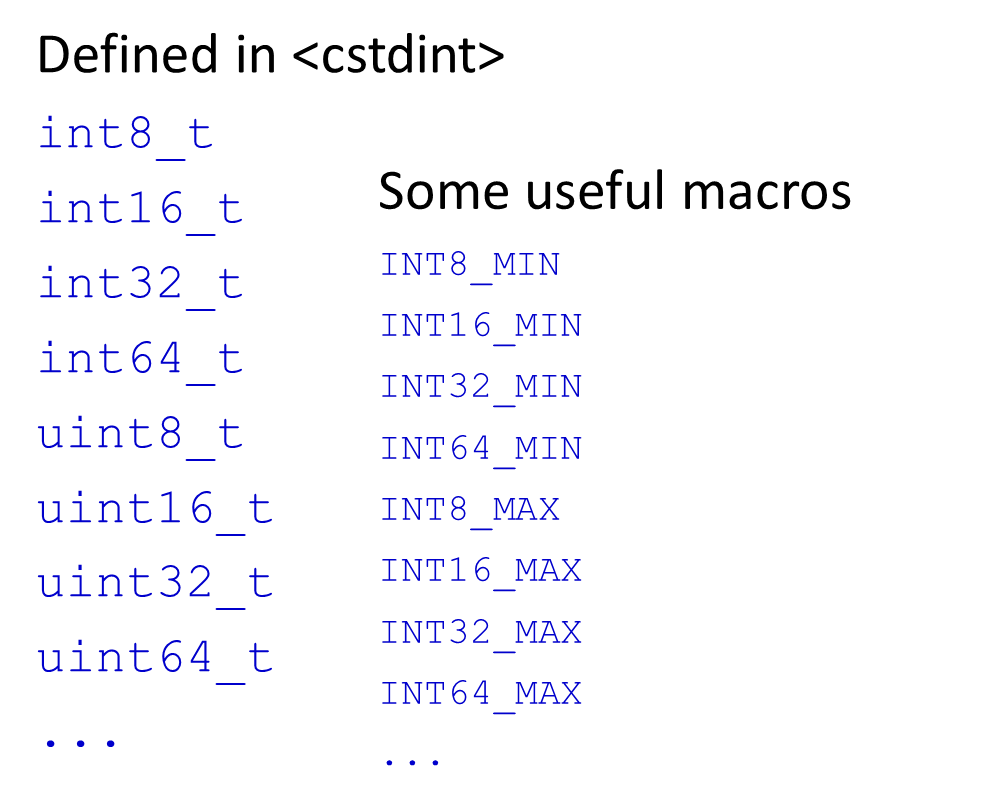 cstdint
cstdint INT8_MAX结果
INT8_MAX结果 float结果
float结果 浮点数对比
浮点数对比 inf和nan结果
inf和nan结果 类型
类型 注意
注意 除法
除法 array
array 变长数组
变长数组 未知长度数组
未知长度数组 数组读写
数组读写 数组越界
数组越界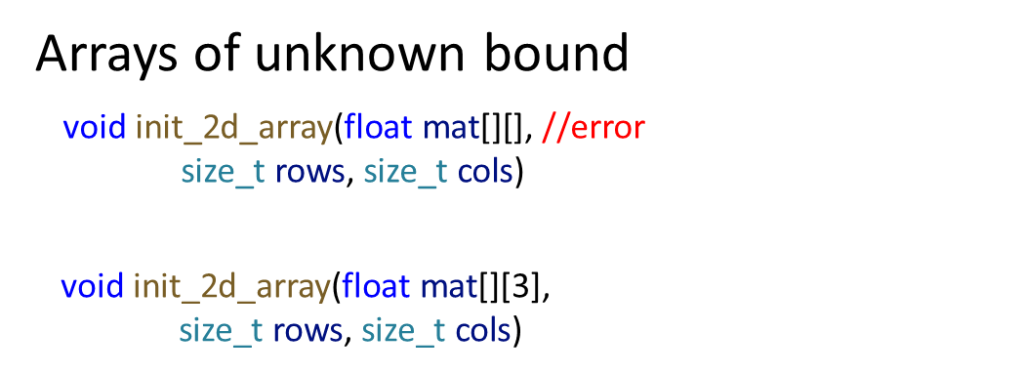 多维数组
多维数组 const array
const array 出现多出来的内容
出现多出来的内容 定义字符串
定义字符串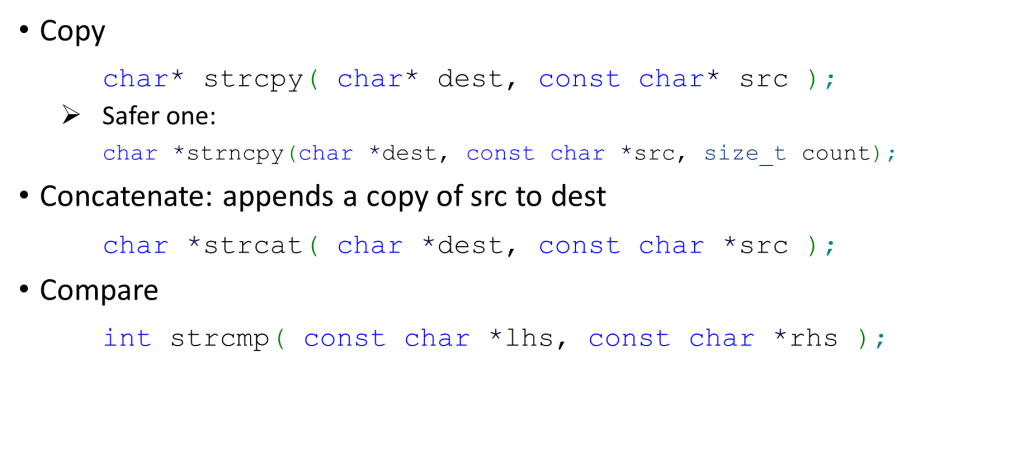 字符串操作
字符串操作 字符串操作
字符串操作 string类字符串
string类字符串 不同的string类
不同的string类 结构体结果输出
结构体结果输出 结构体内存
结构体内存 补齐问题
补齐问题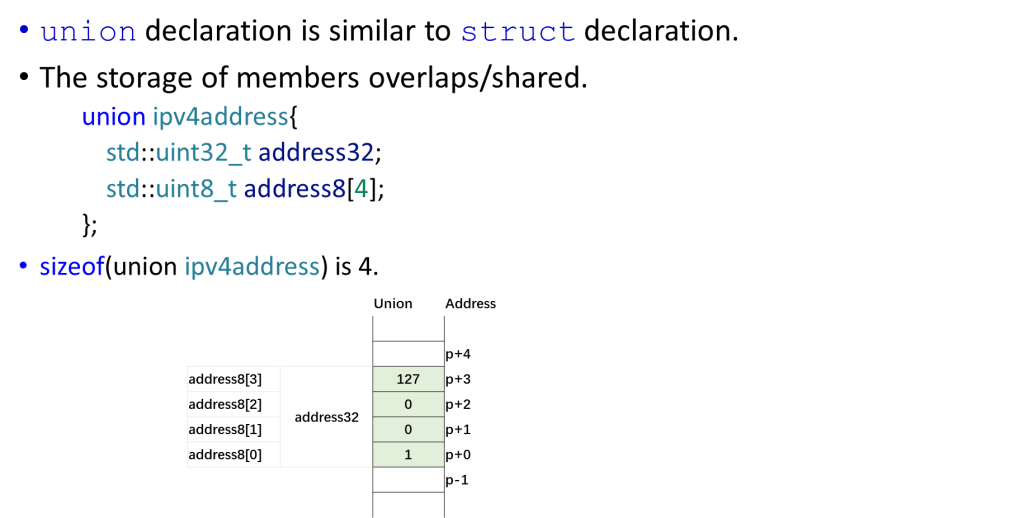 结构体
结构体 union
union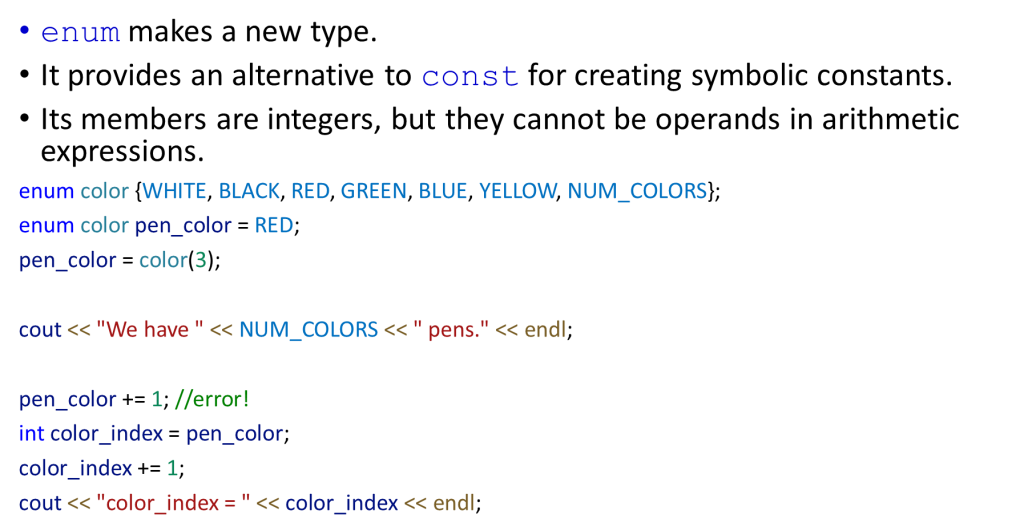 枚举
枚举 代码解释
代码解释 程序内存
程序内存 windows下运行结果
windows下运行结果 在Linux下(x86)似乎不符合?
在Linux下(x86)似乎不符合? 在arm的linux(小米平板5pro)运行结果
在arm的linux(小米平板5pro)运行结果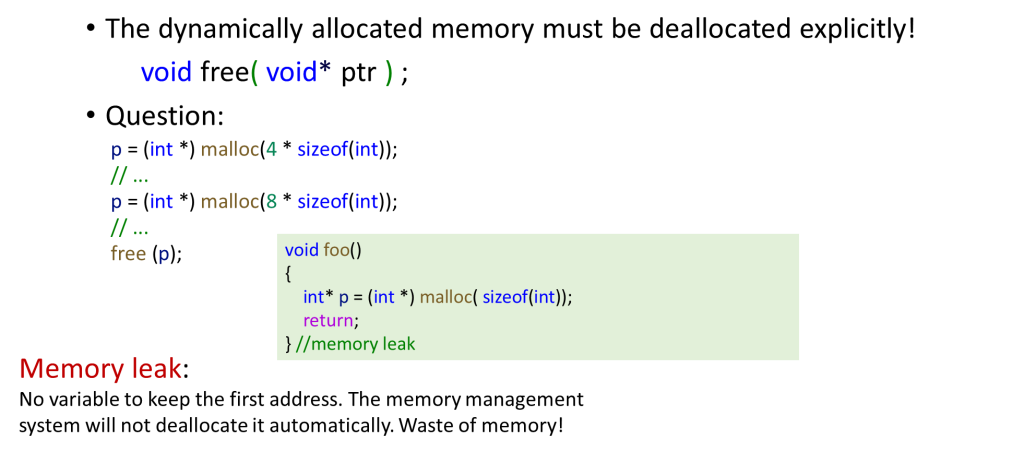
 运行结果
运行结果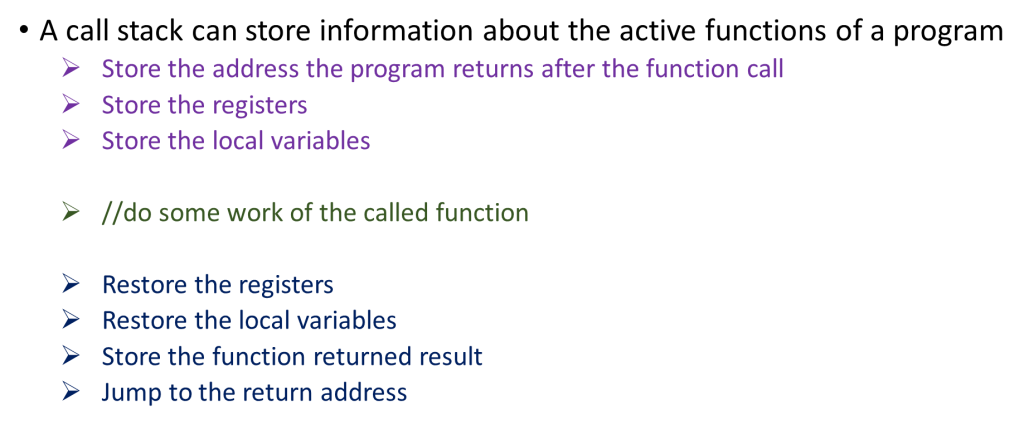 函数调用
函数调用 传递拷贝
传递拷贝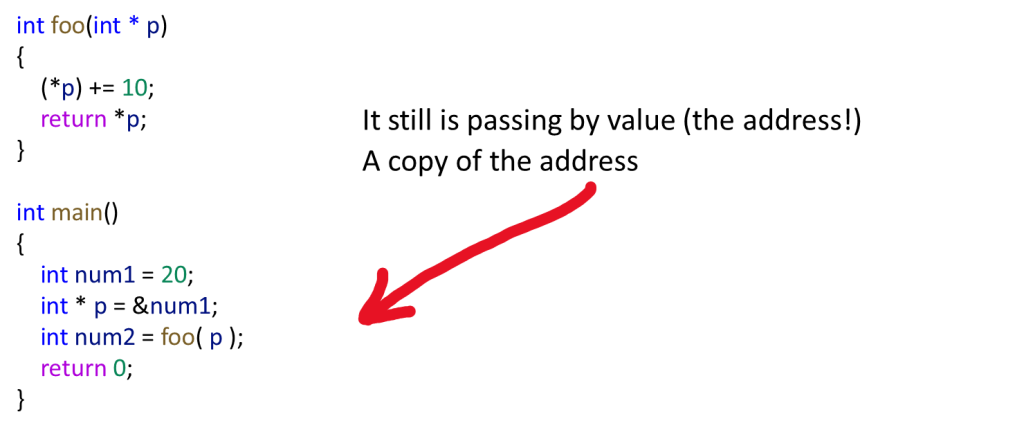 传地址
传地址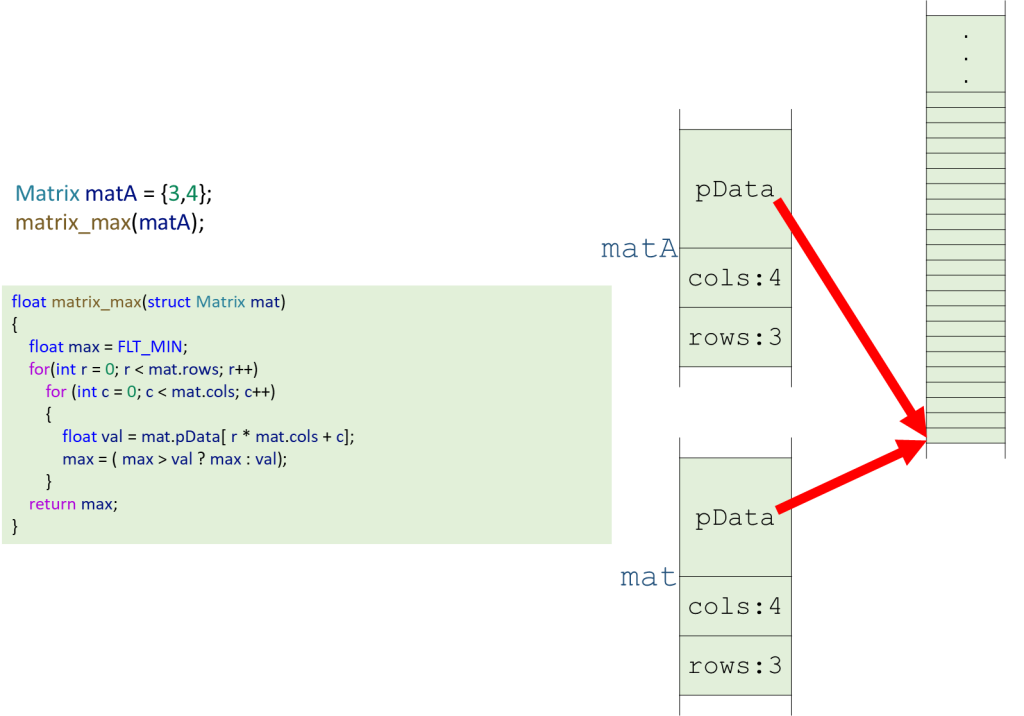 传递结构体
传递结构体 引用
引用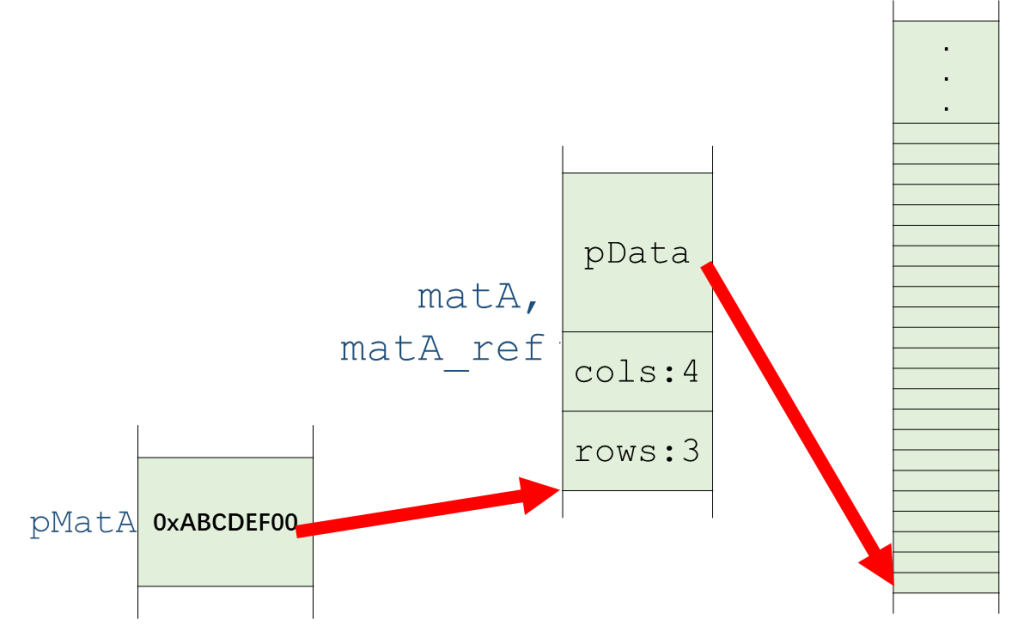 指针与引用
指针与引用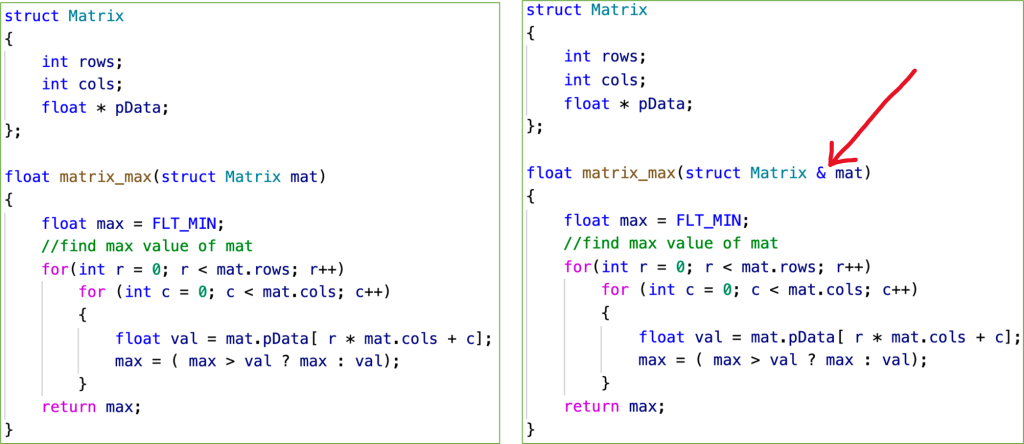 引用做函数参数
引用做函数参数 需要不断跳转
需要不断跳转 可能指令结果
可能指令结果 建议编译器
建议编译器 运行结果
运行结果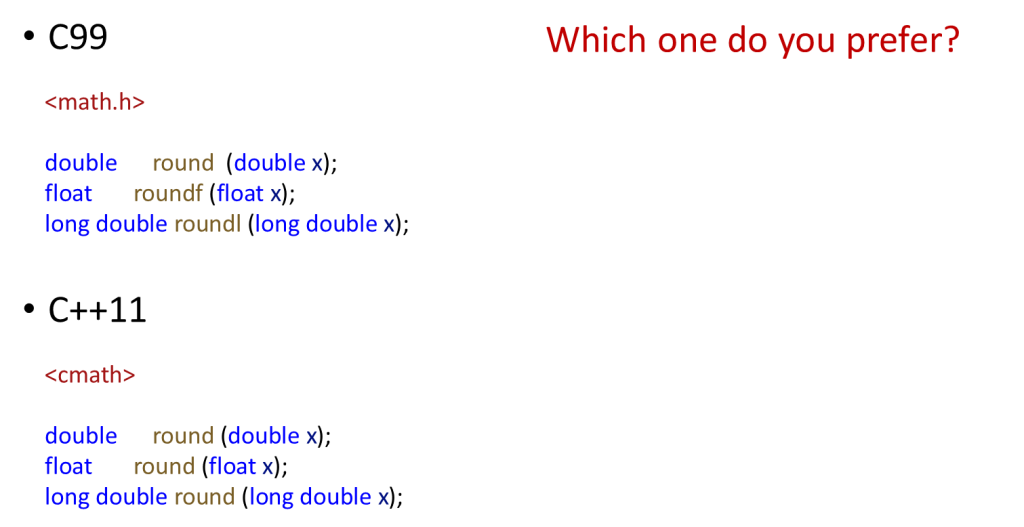 函数重载
函数重载 template
template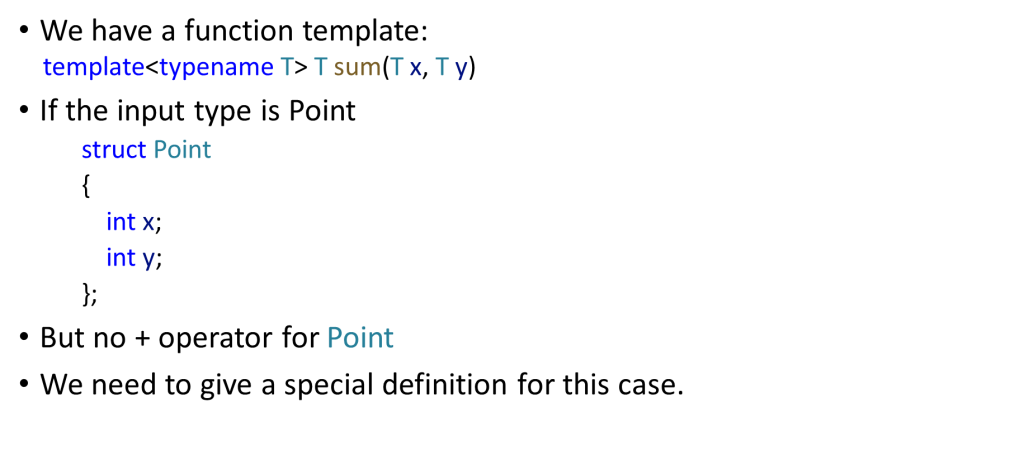 结构体模板加法操作
结构体模板加法操作 结果
结果 SIMD
SIMD arm上运行测试
arm上运行测试 release版本
release版本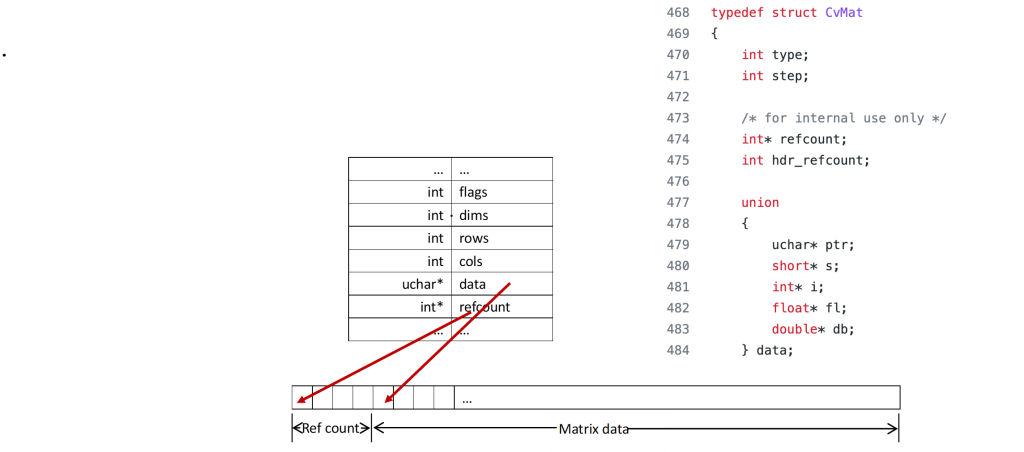 数据存储
数据存储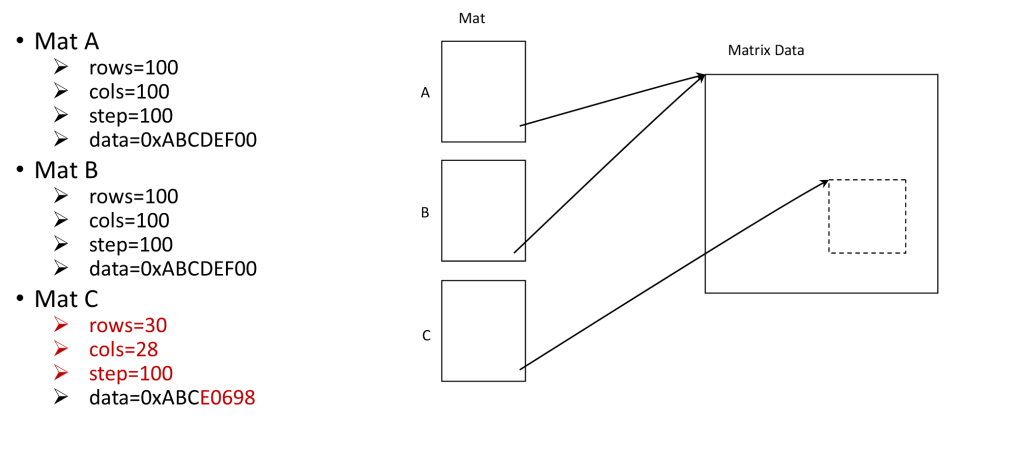 扣取一个小区域
扣取一个小区域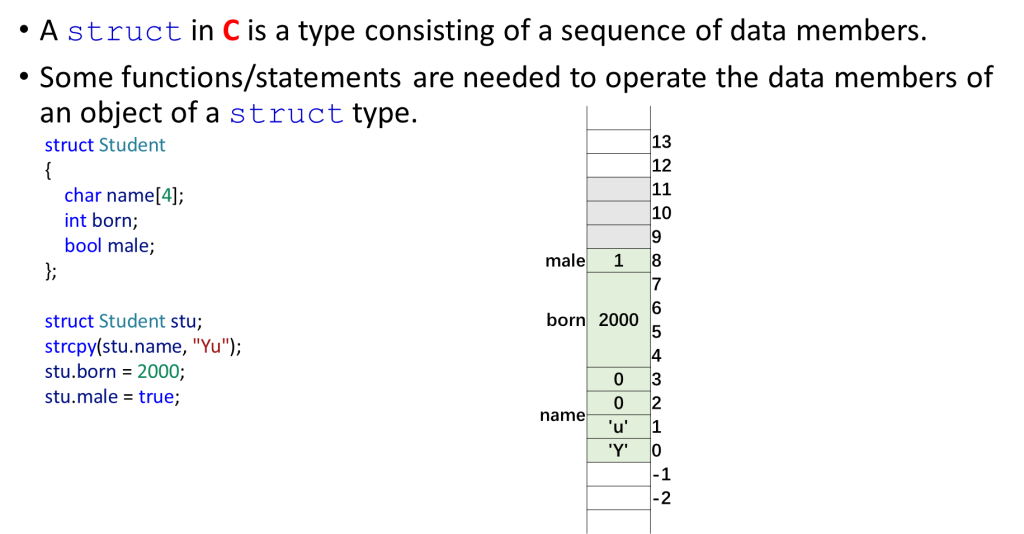 struct
struct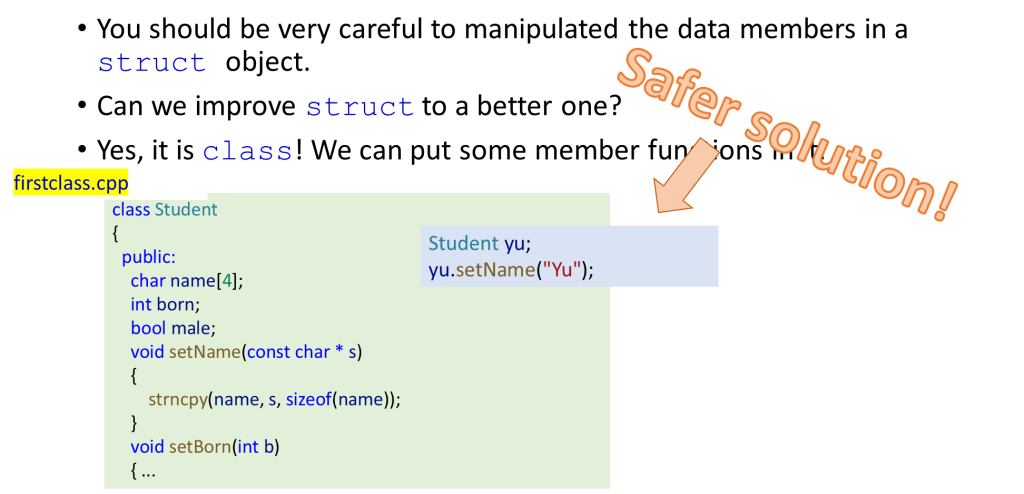 class
class 第一个类
第一个类 报错
报错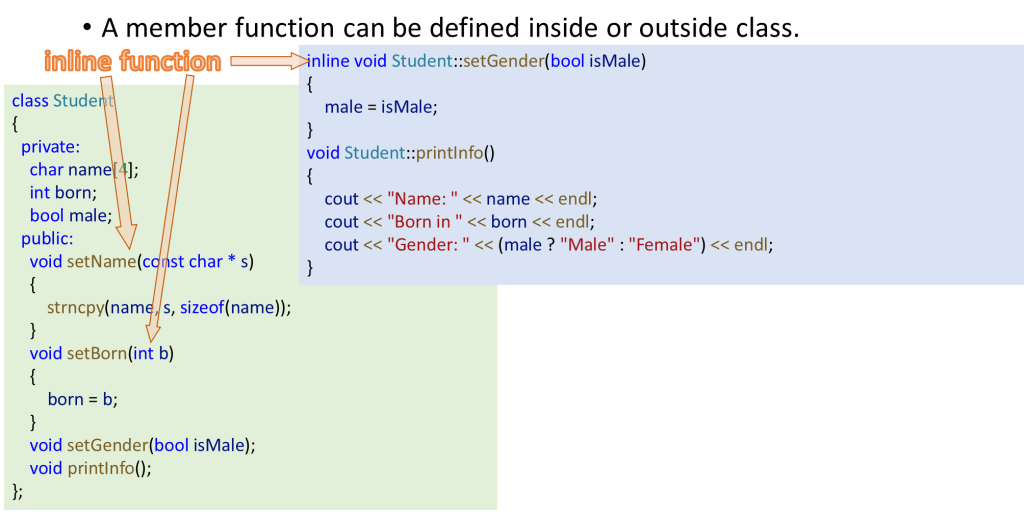 成员函数
成员函数 类放在头文件中
类放在头文件中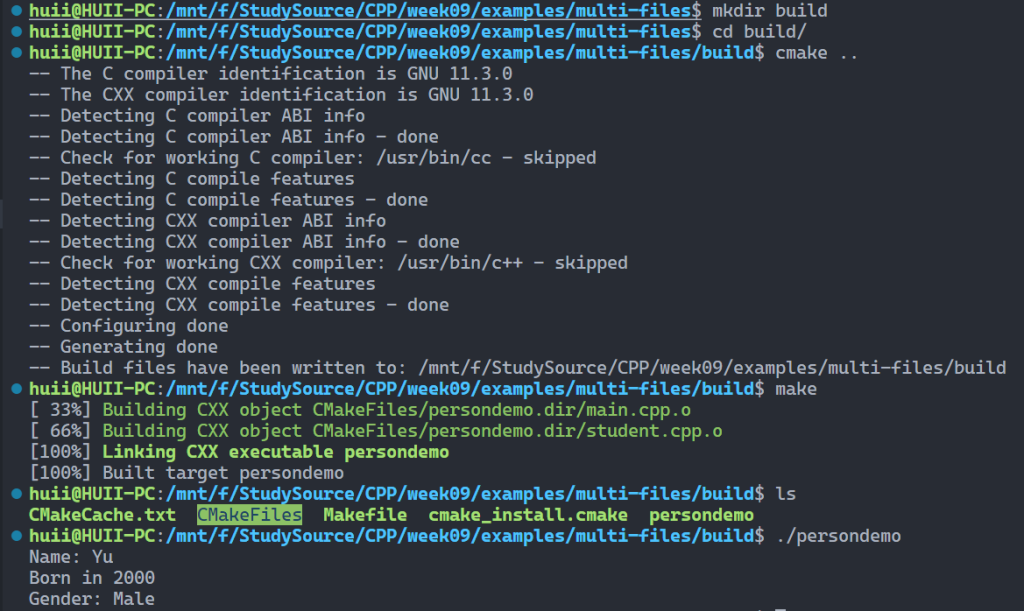 运行结果
运行结果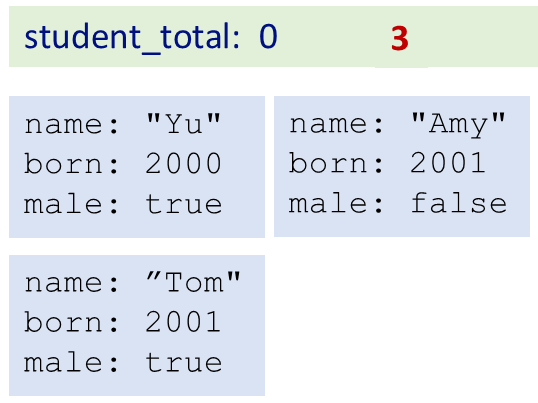 静态成员示意图
静态成员示意图 函数重载
函数重载 结果
结果 20+t1?
20+t1? 结果
结果 隐式与显式类型转换
隐式与显式类型转换 结果
结果 结果
结果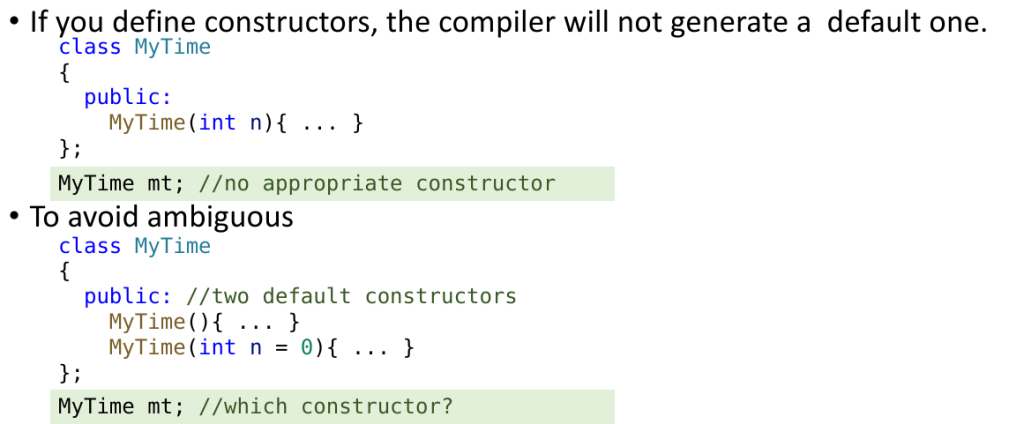 构造函数
构造函数 析构函数
析构函数 默认拷贝构造函数
默认拷贝构造函数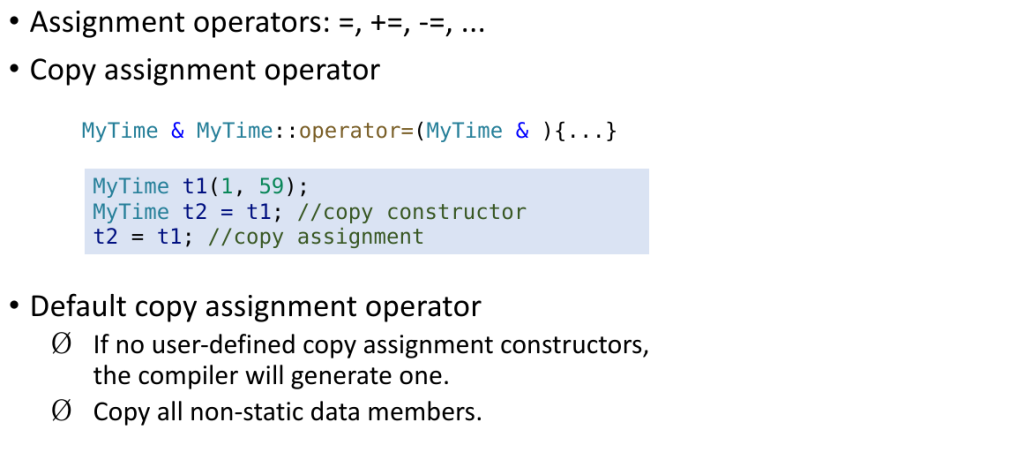 拷贝赋值
拷贝赋值 出现错误提示
出现错误提示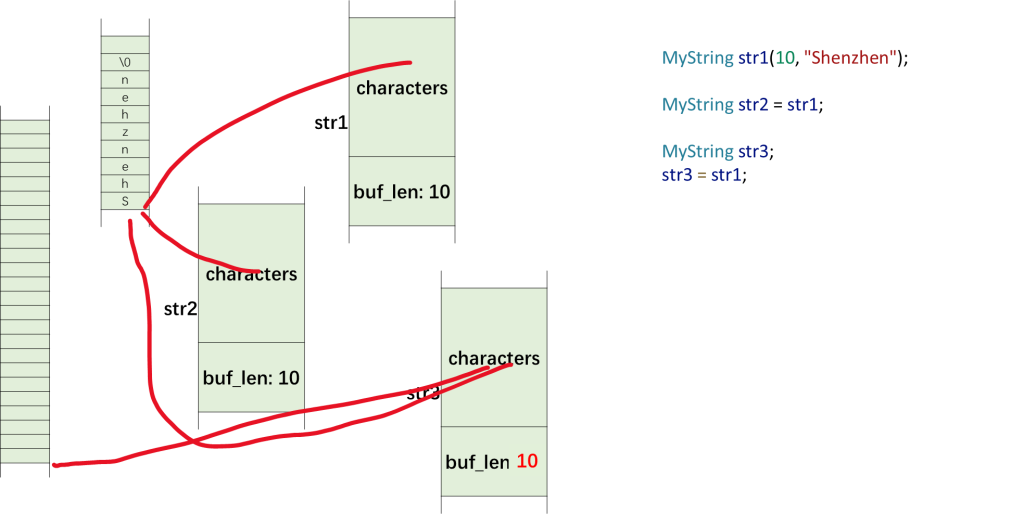 结构
结构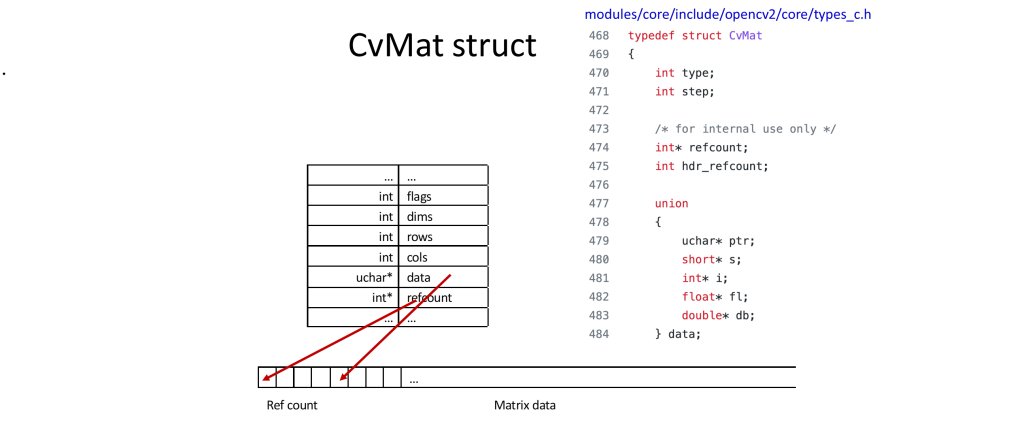 opencv
opencv std::shared_ptr
std::shared_ptr std::unique_ptr
std::unique_ptr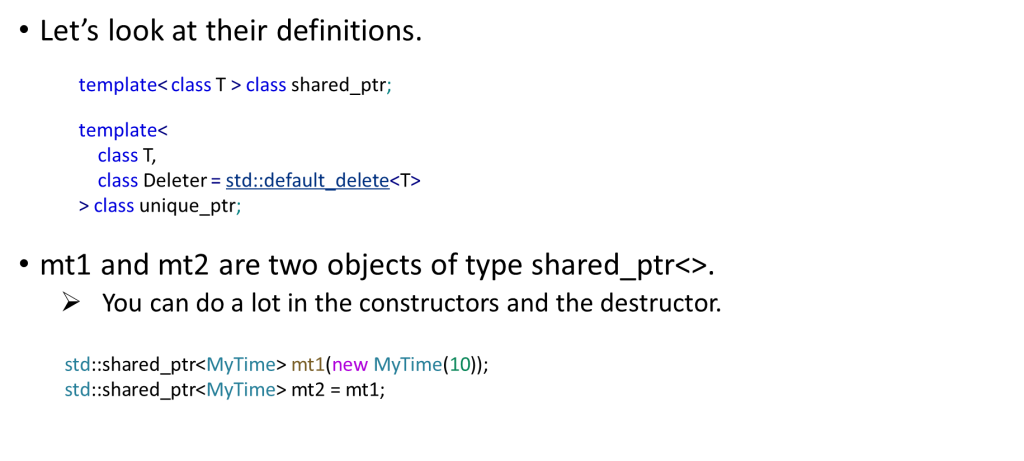 smart pointer
smart pointer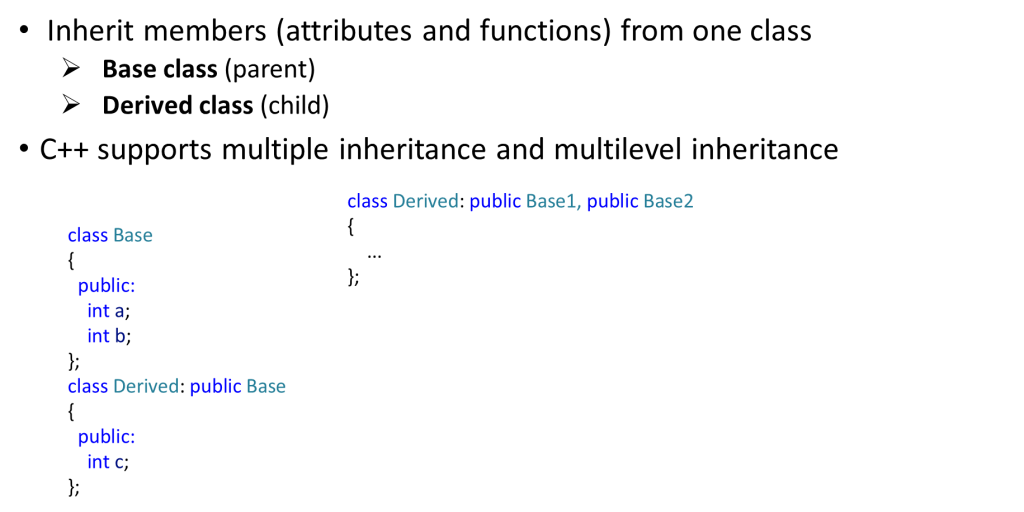 继承
继承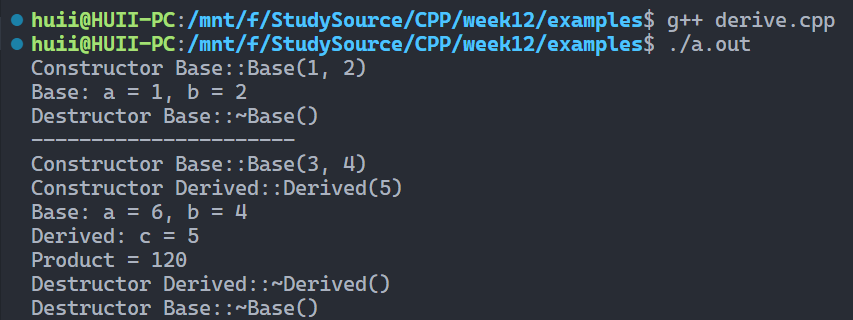 运行结果
运行结果 protected
protected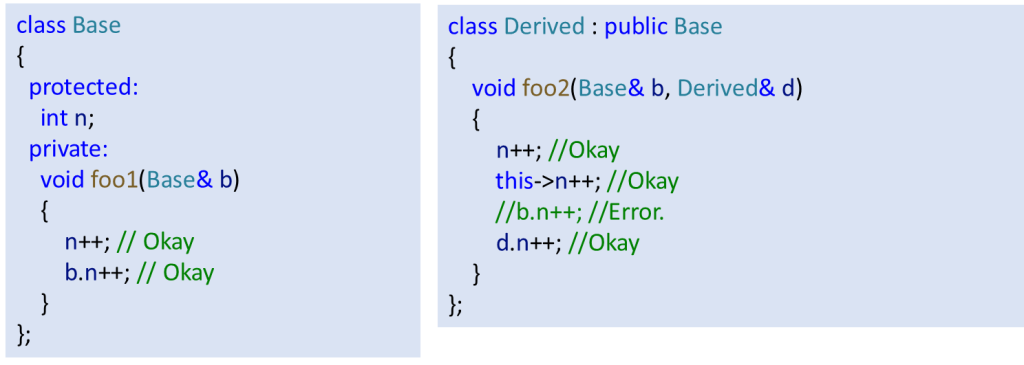 protected
protected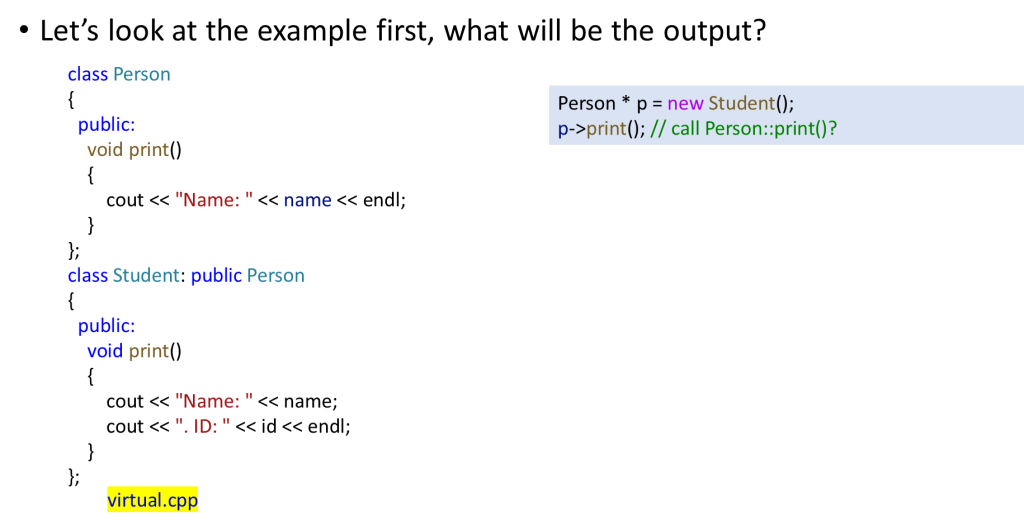 虚函数
虚函数 结果
结果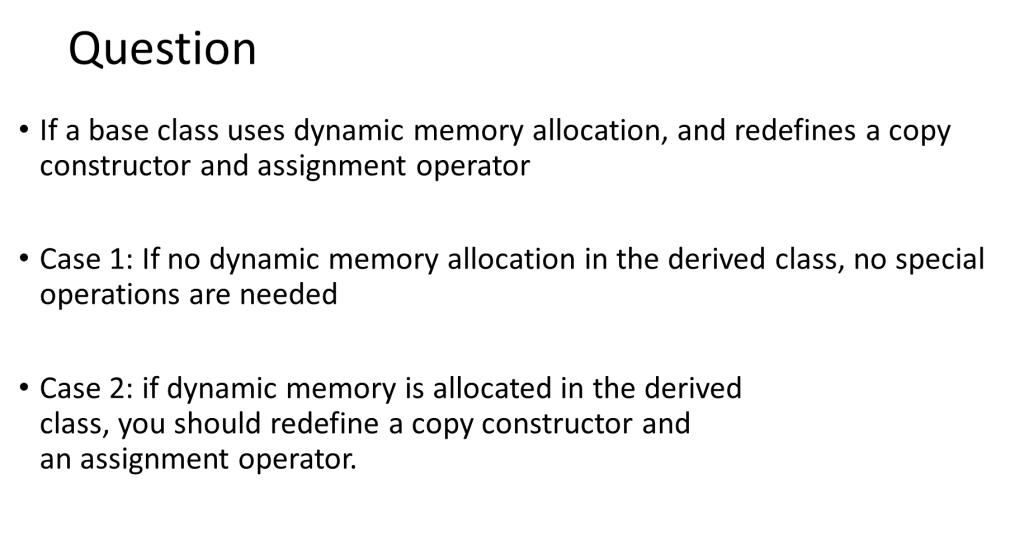 question
question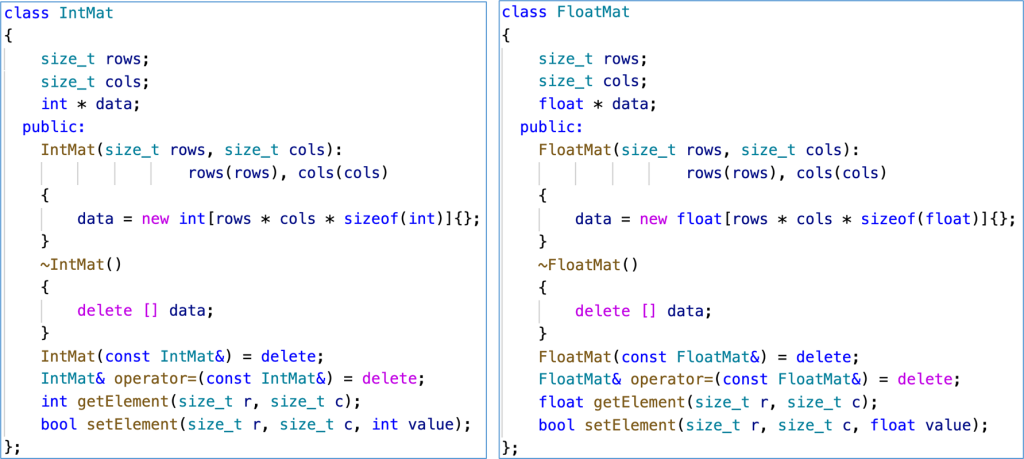 类模板
类模板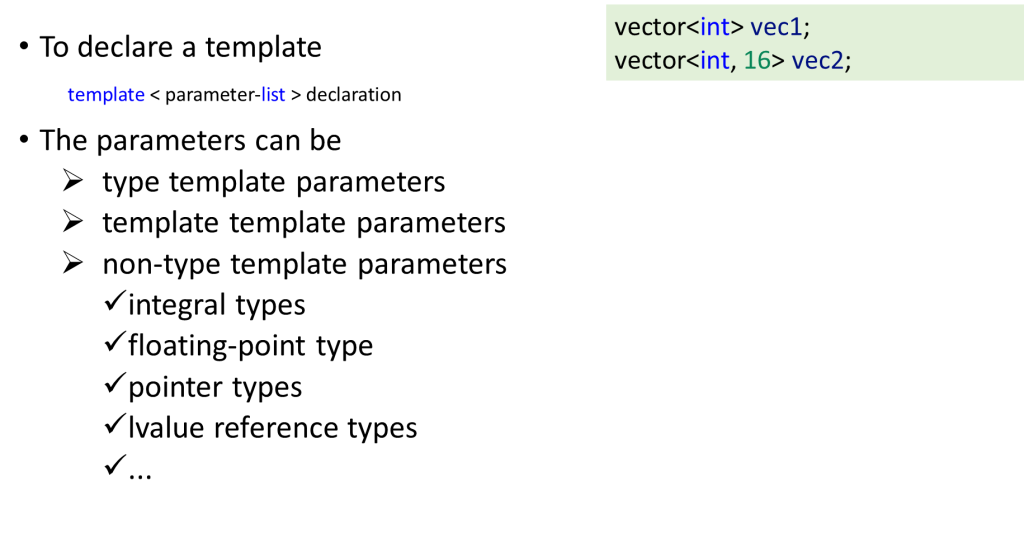 非类型参数
非类型参数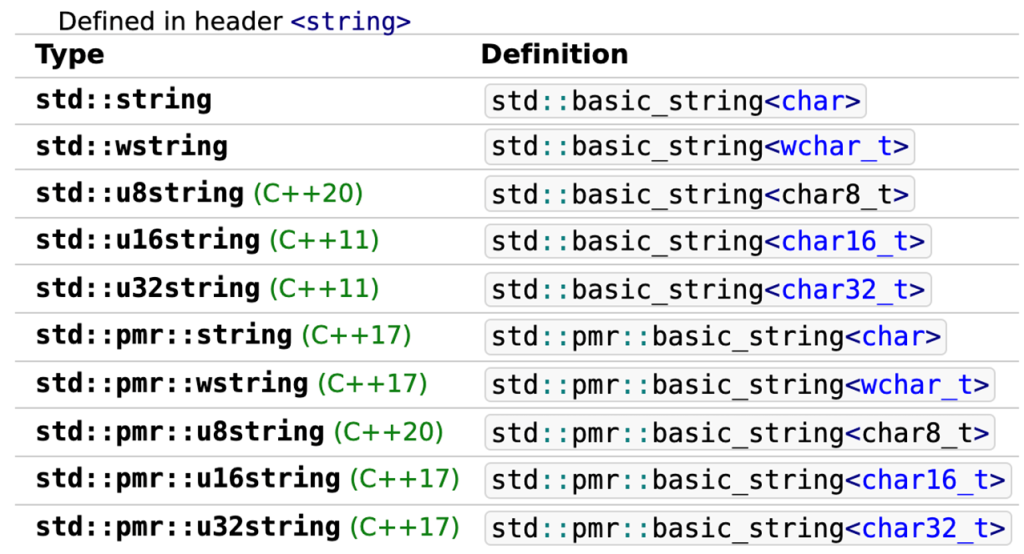 string
string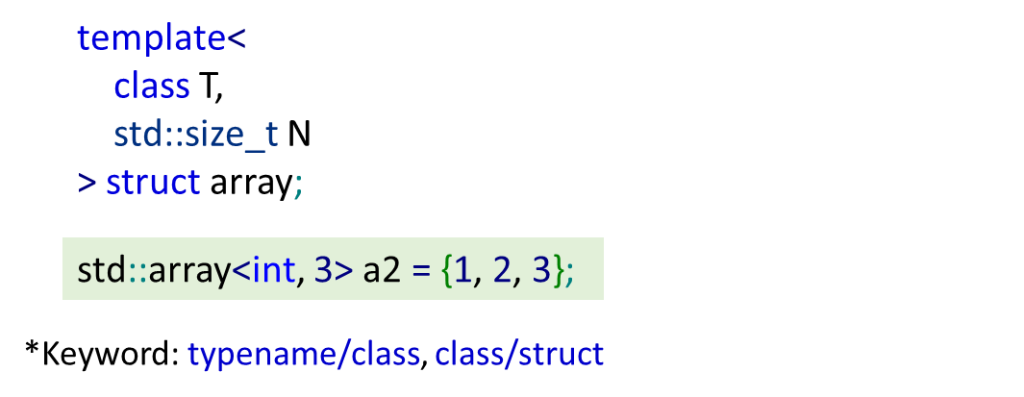 array
array other
other Output Stream and Error Stream
Output Stream and Error Stream c版本错误
c版本错误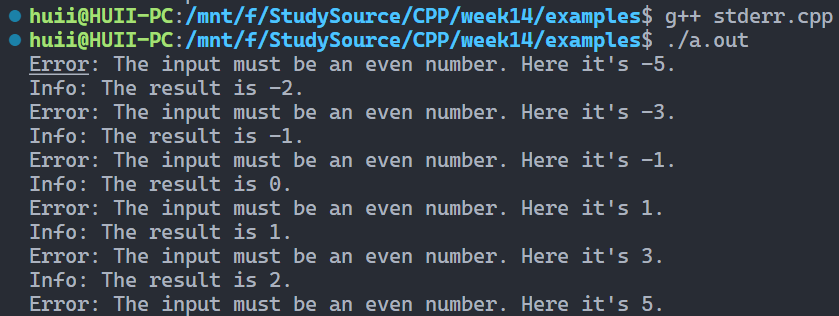 cpp版本错误
cpp版本错误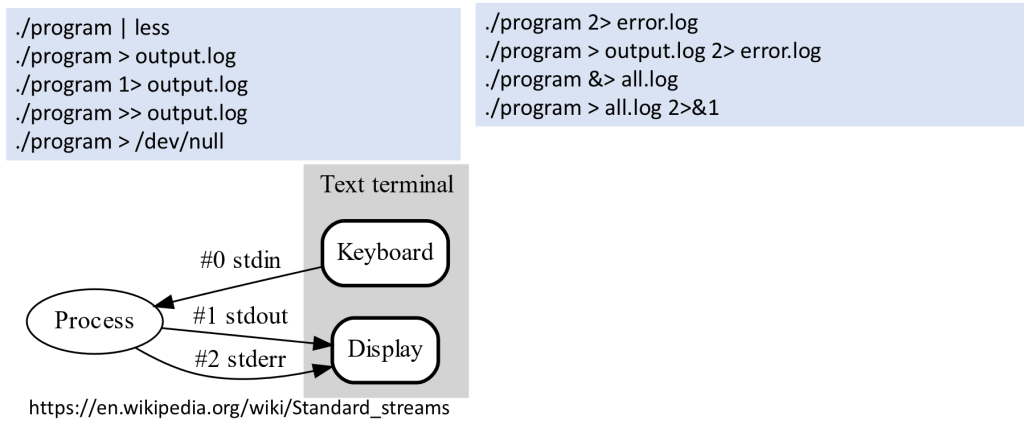 管道
管道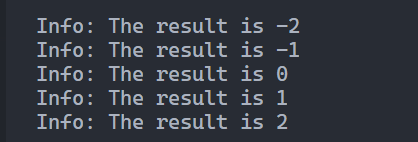 显示标准输出内容
显示标准输出内容 只有错误流输出,标准流被重定向到t.txt
只有错误流输出,标准流被重定向到t.txt t.txt内容
t.txt内容 断言
断言 运行结果
运行结果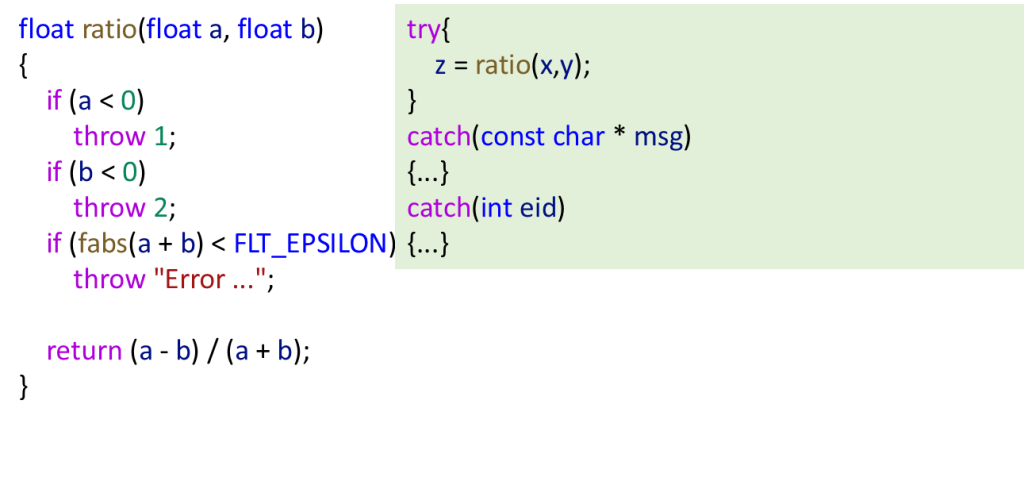 A try block can be followed by multiple catch blocks.
A try block can be followed by multiple catch blocks.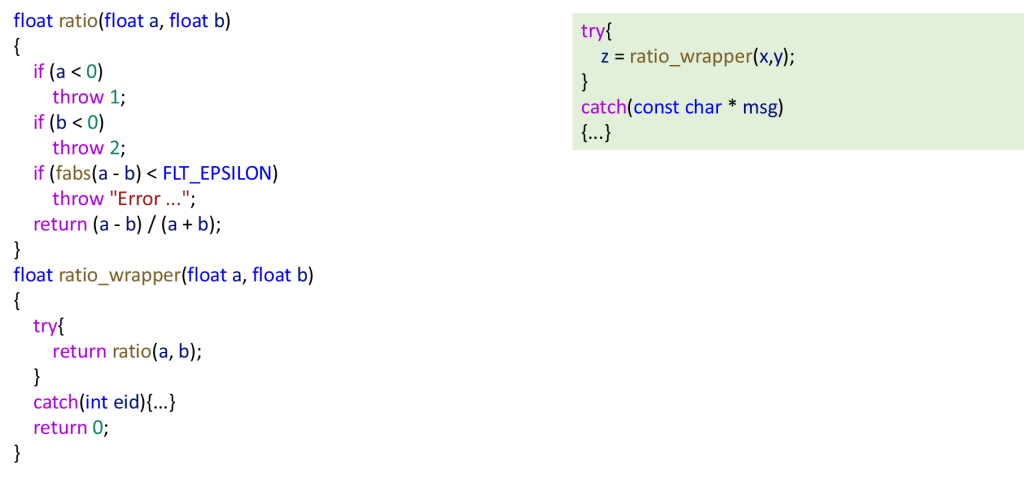 Stack Unwinding
Stack Unwinding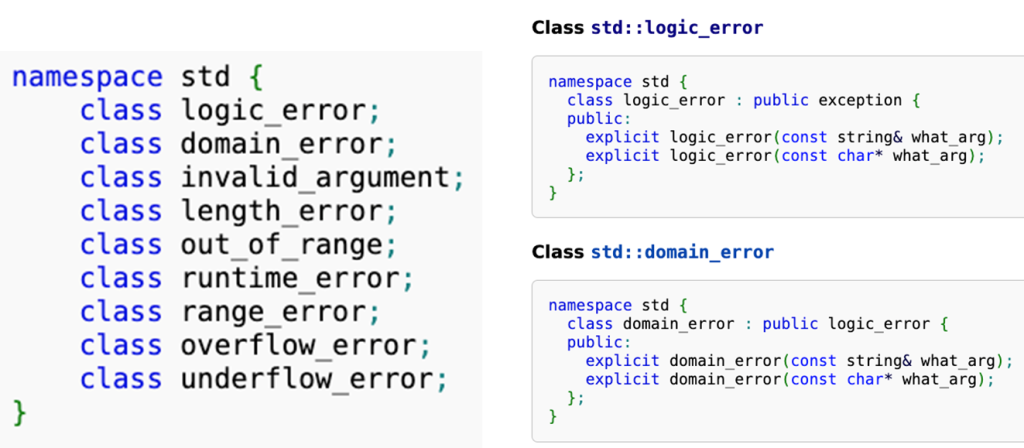 std::exception
std::exception 报错
报错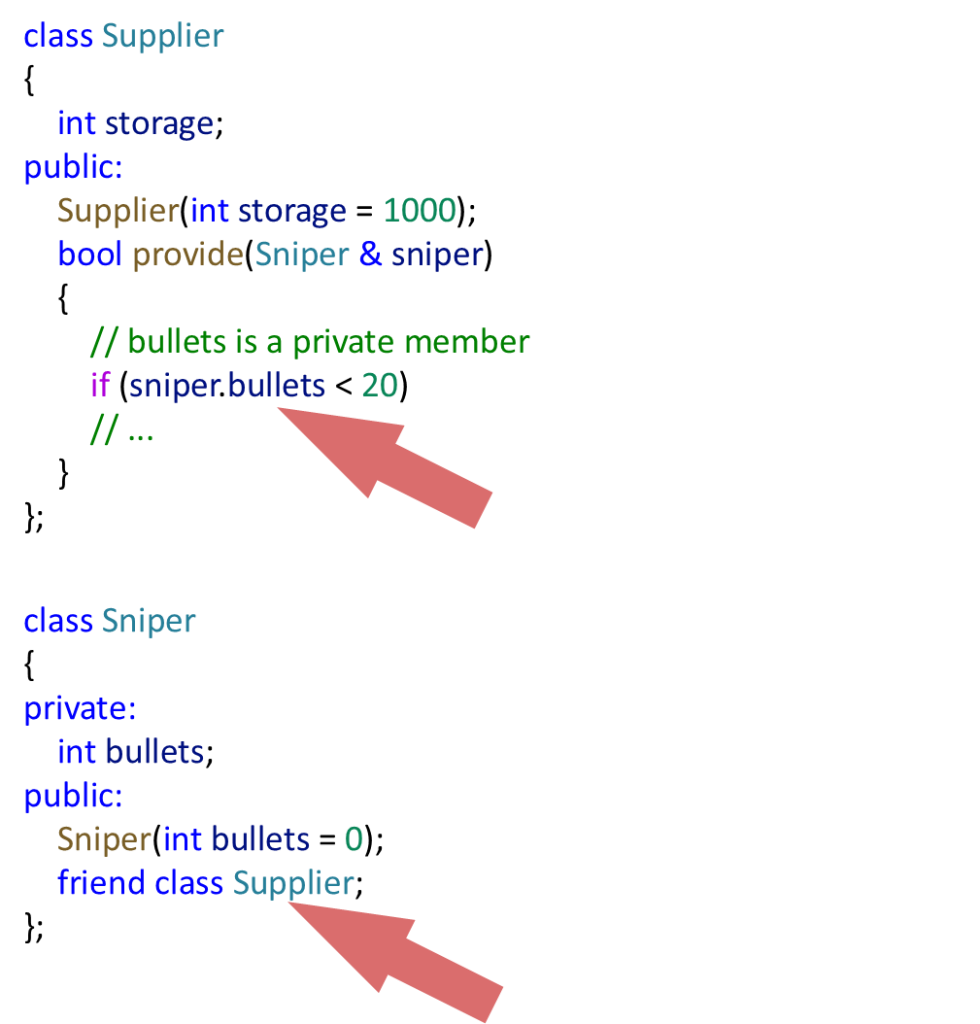 友元类
友元类 友元成员函数
友元成员函数 Nested Enumerations
Nested Enumerations 放到内部
放到内部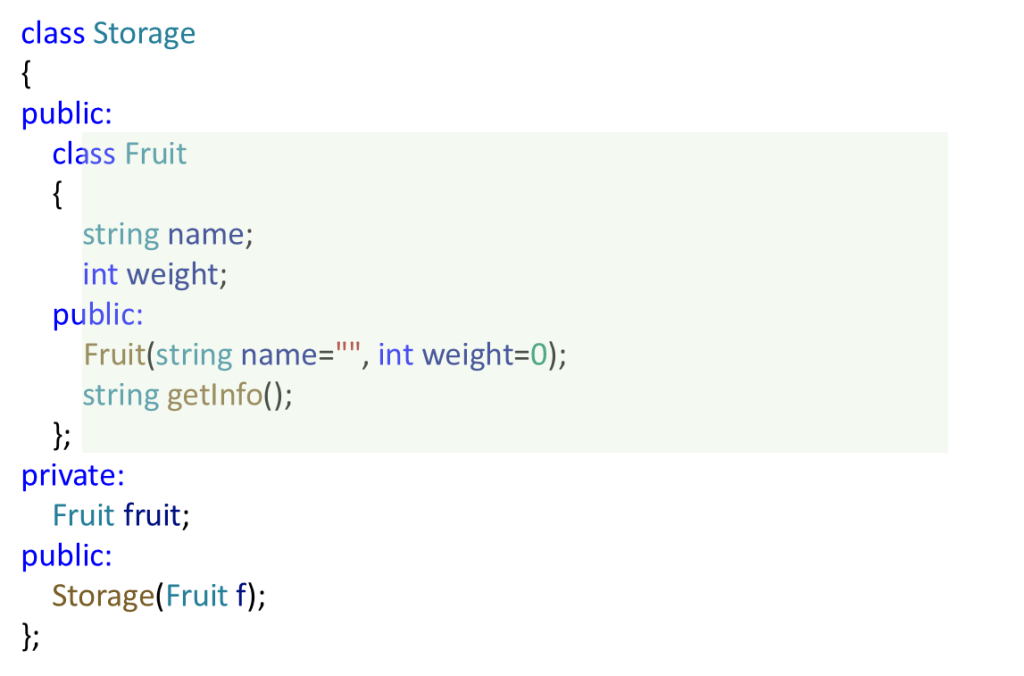 内部类
内部类 typeid
typeid typeid
typeid 转化失败
转化失败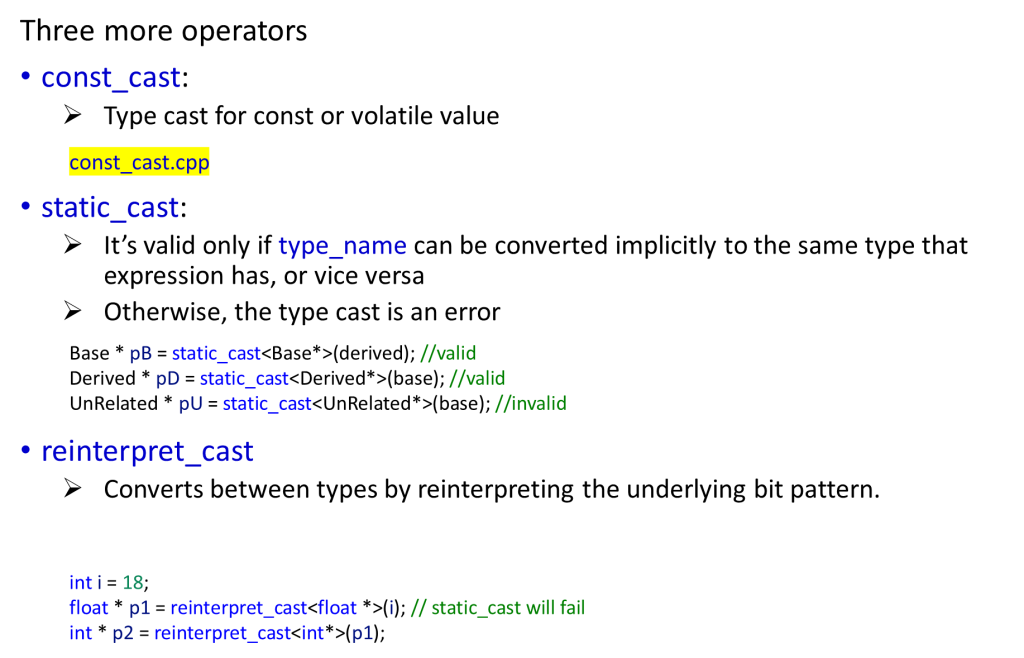 More Type Cast Operators
More Type Cast Operators const_cast
const_cast